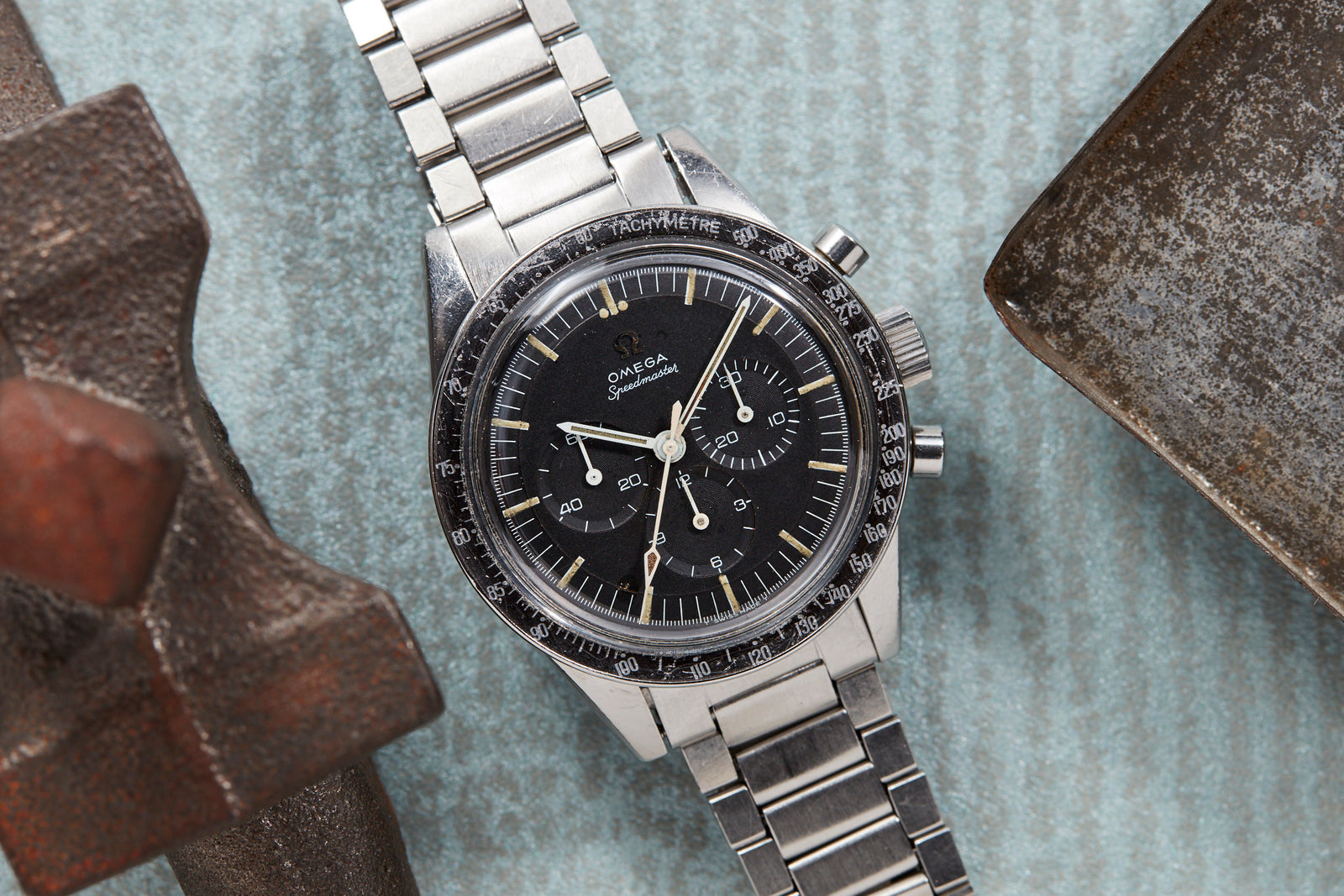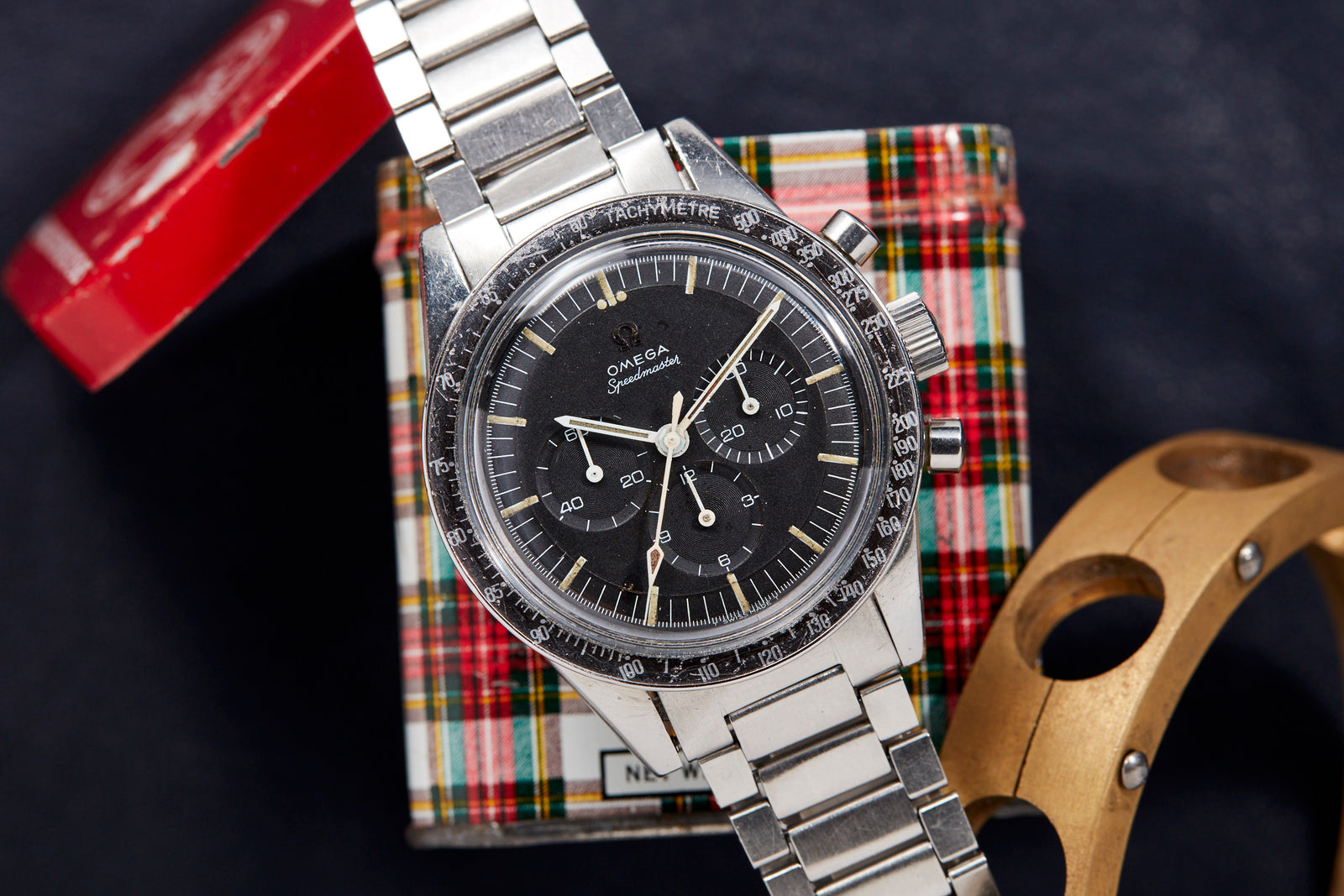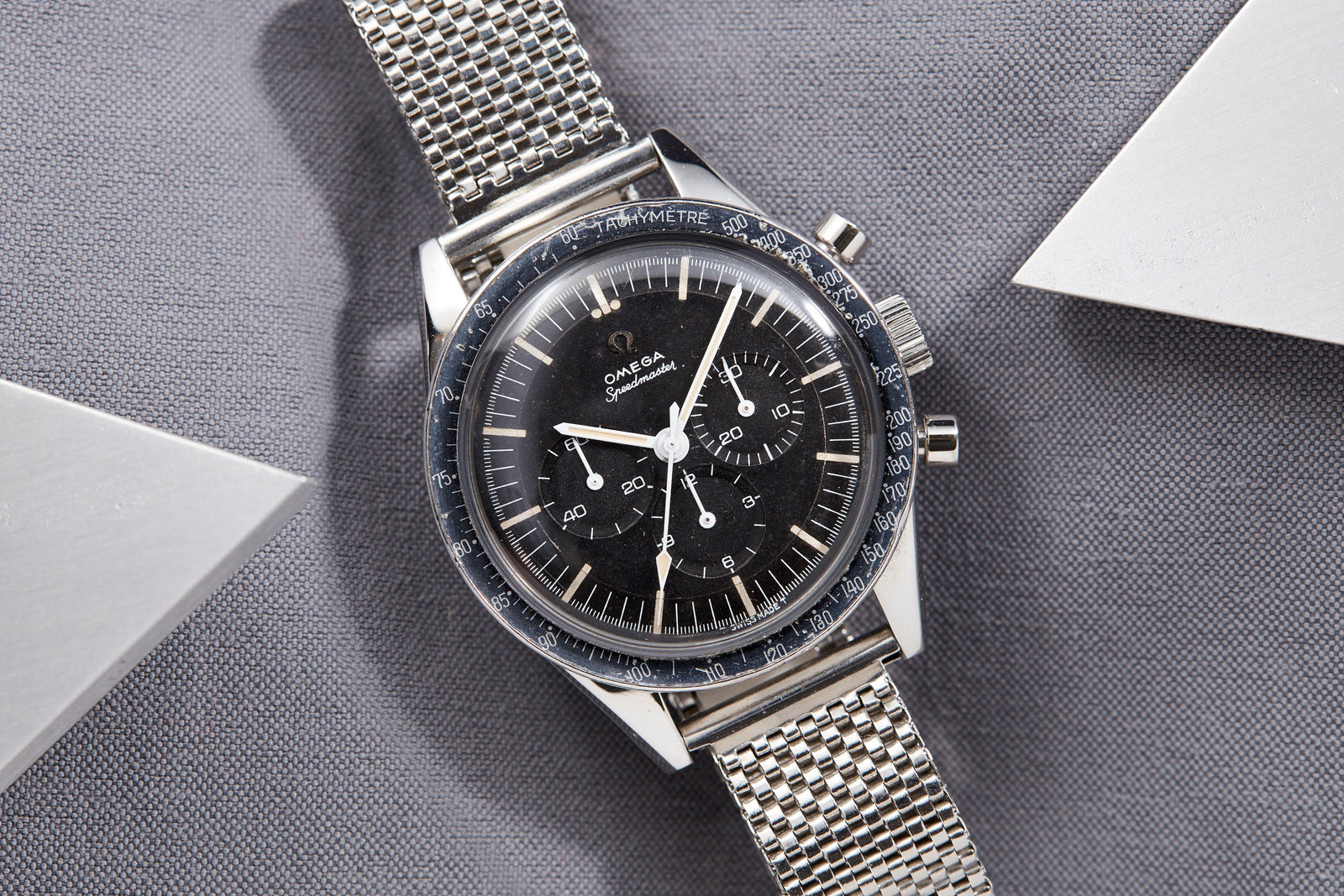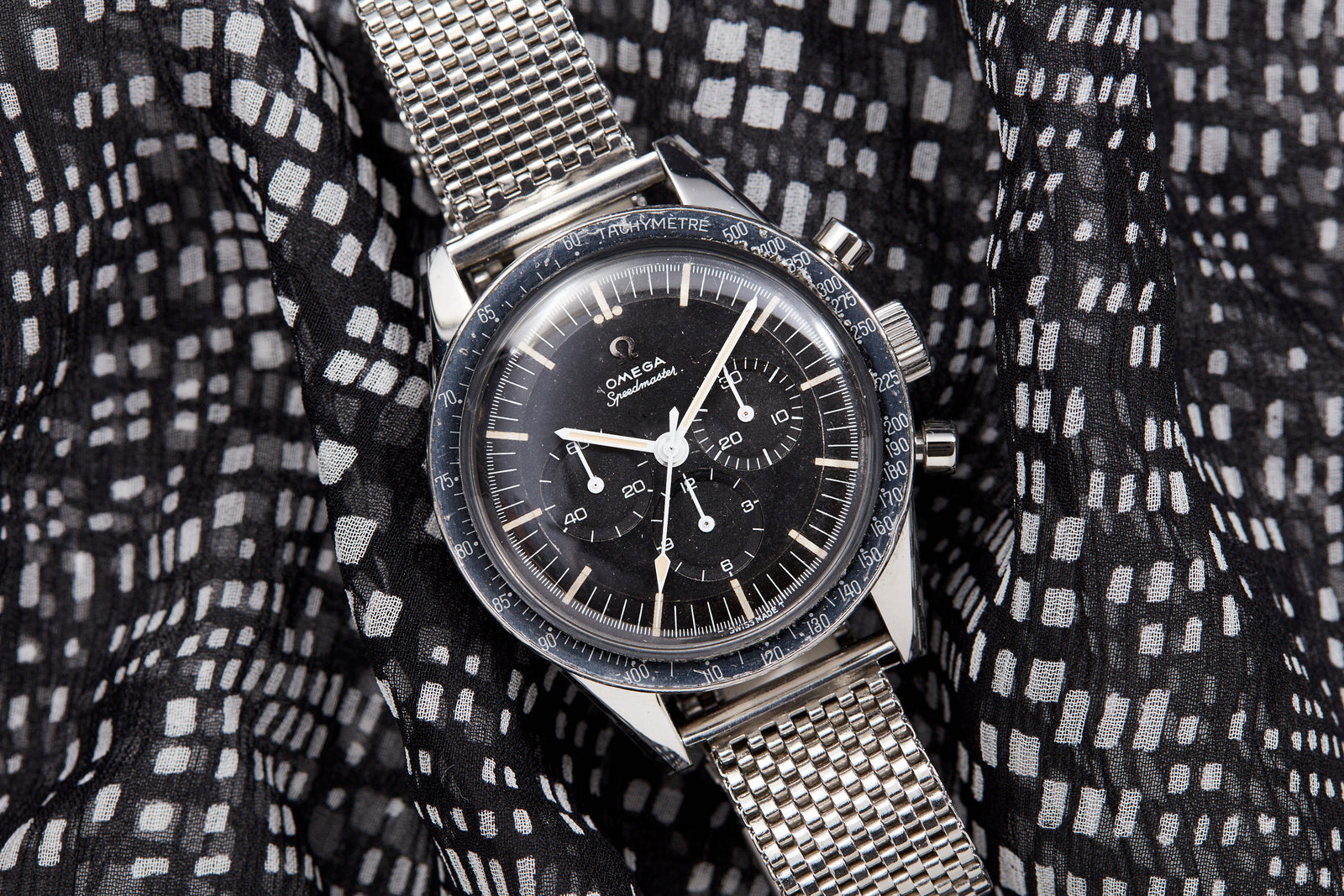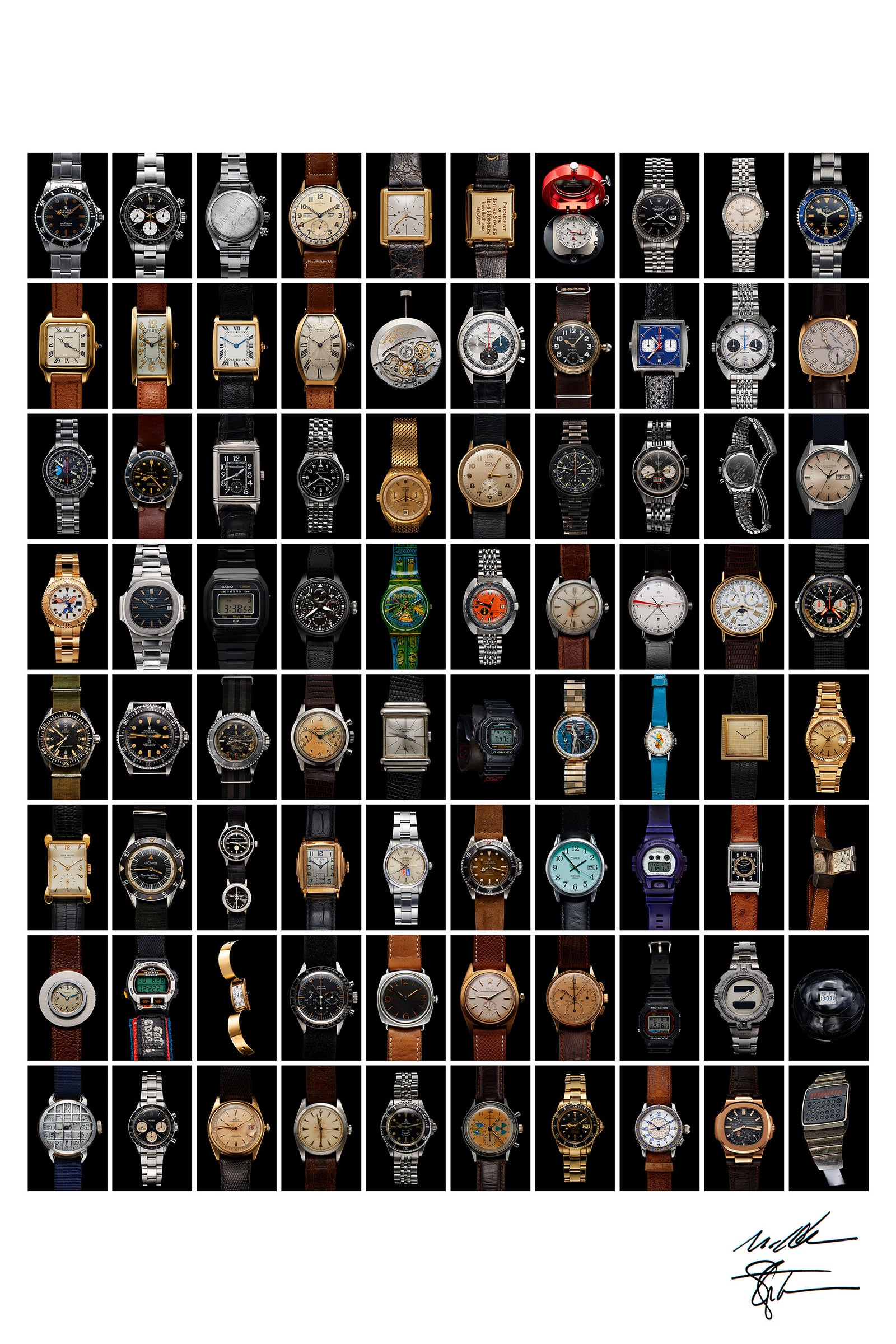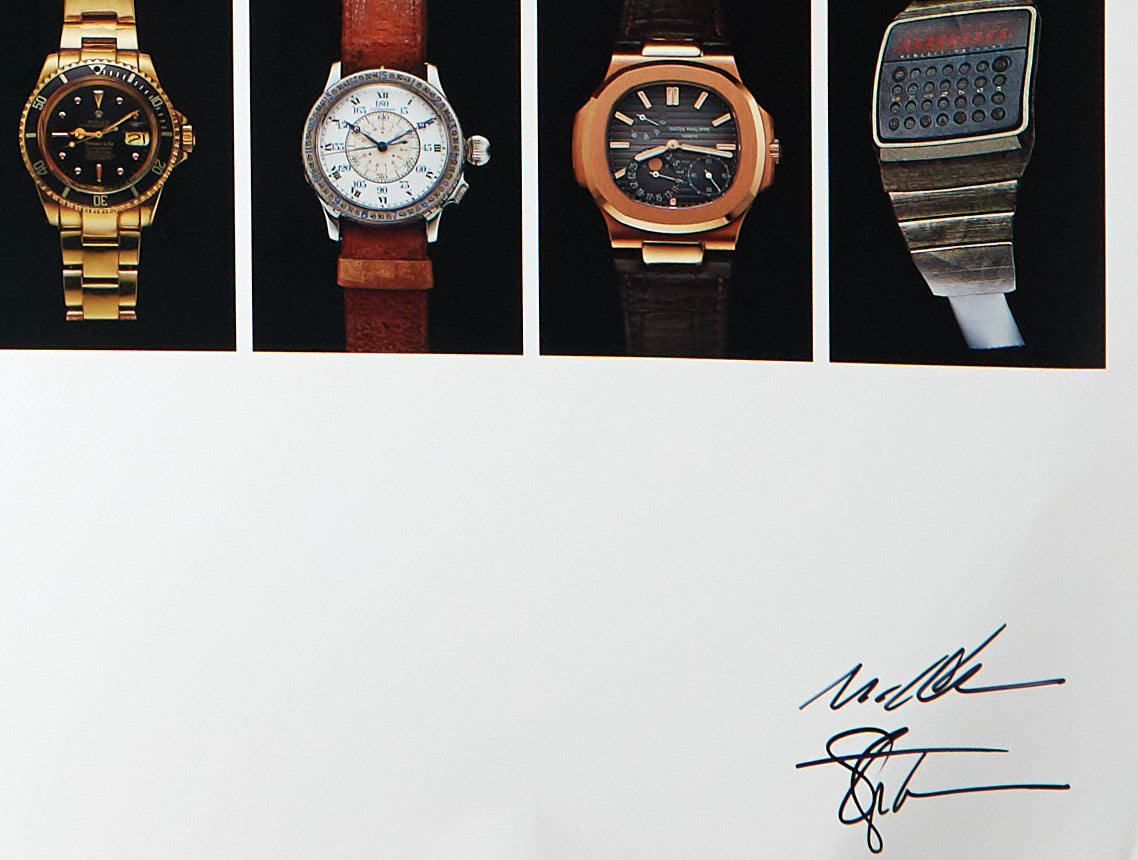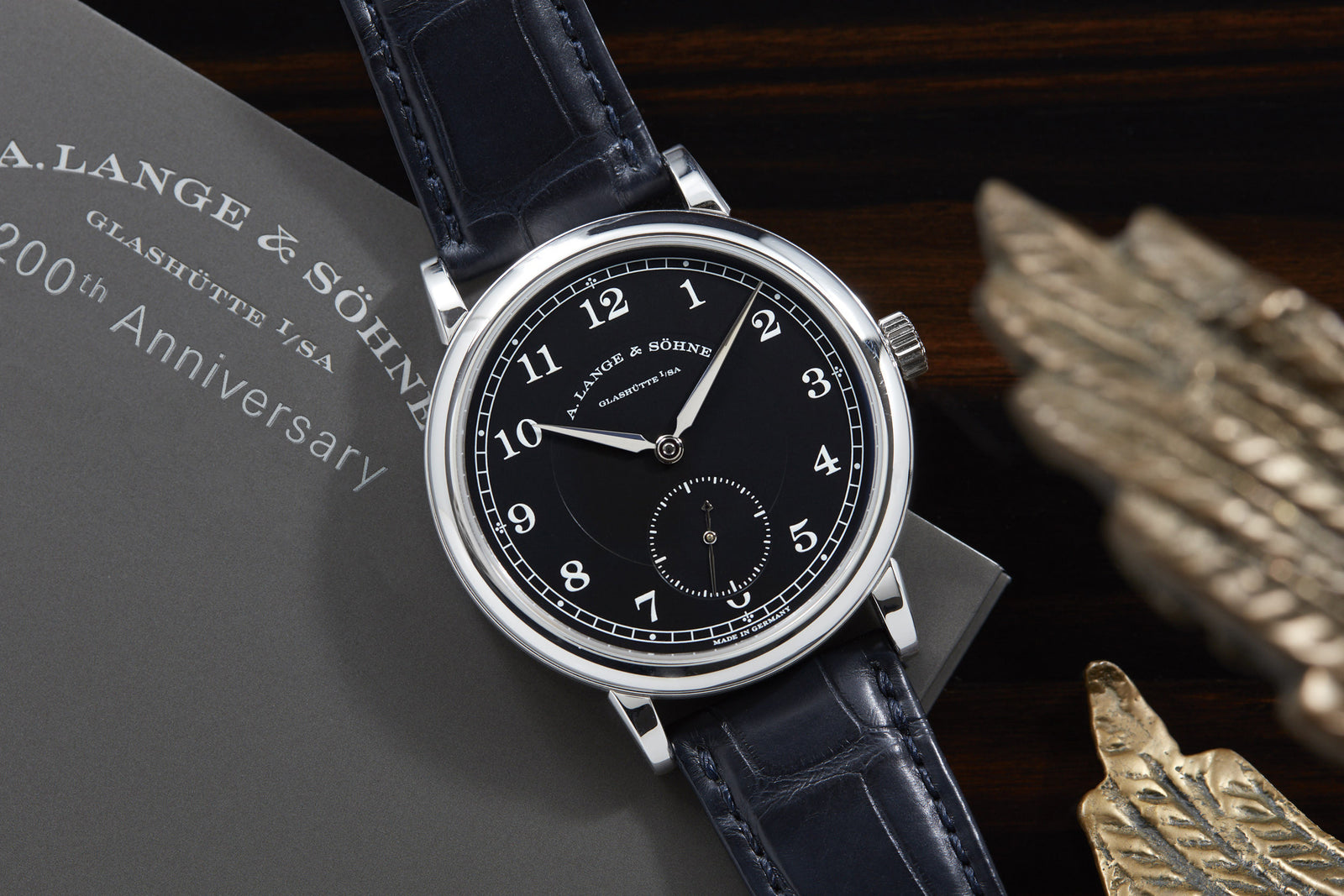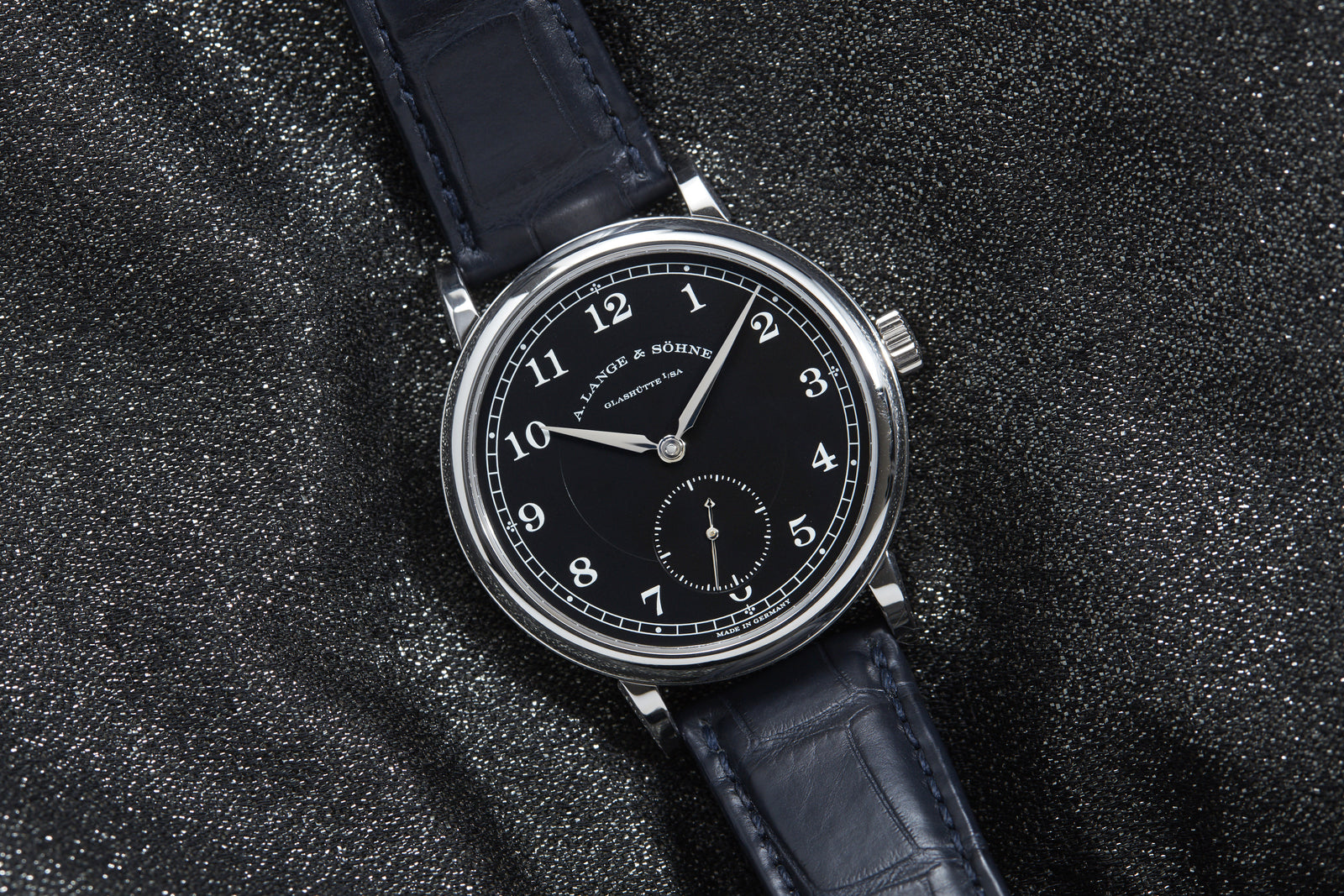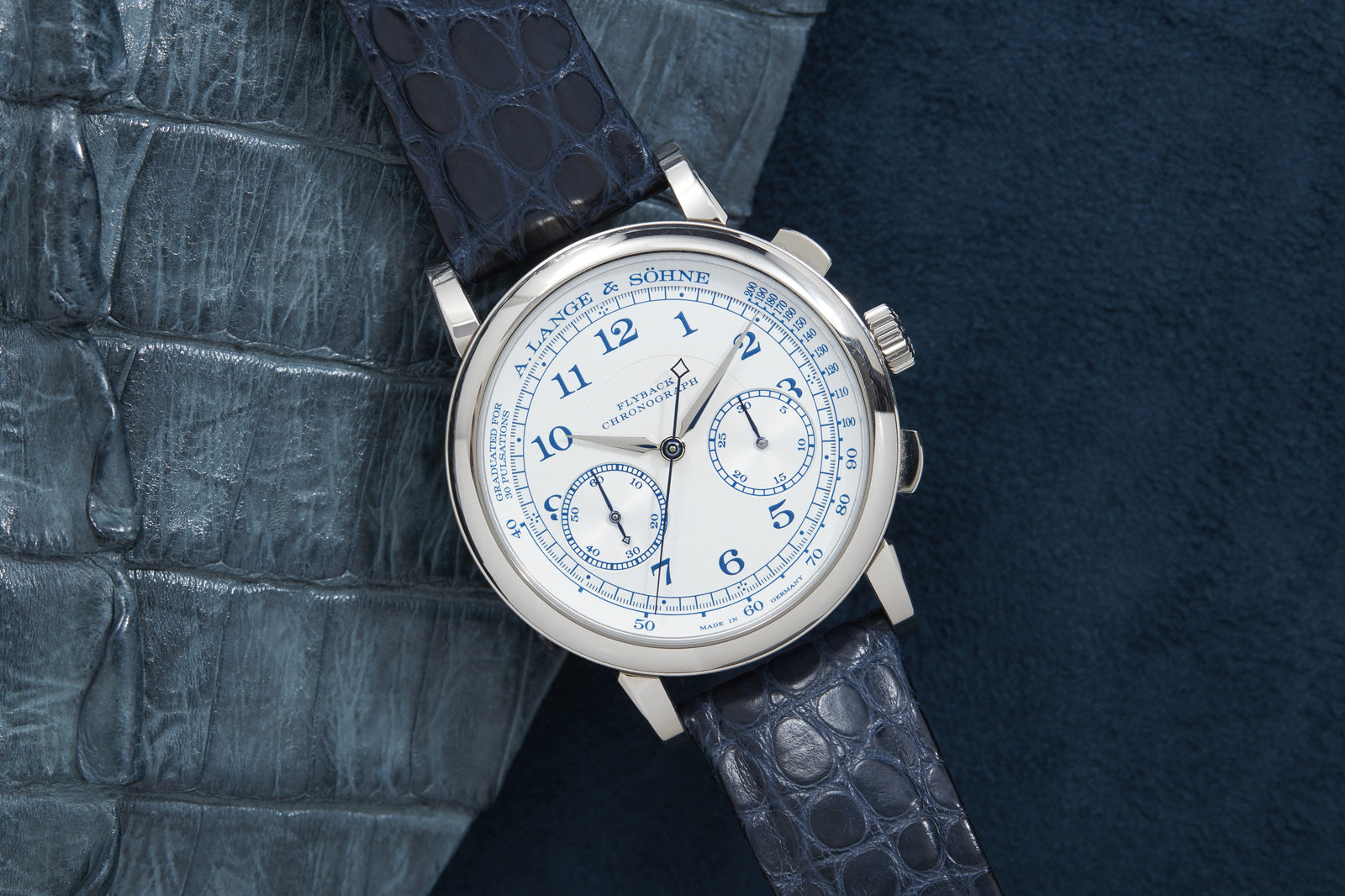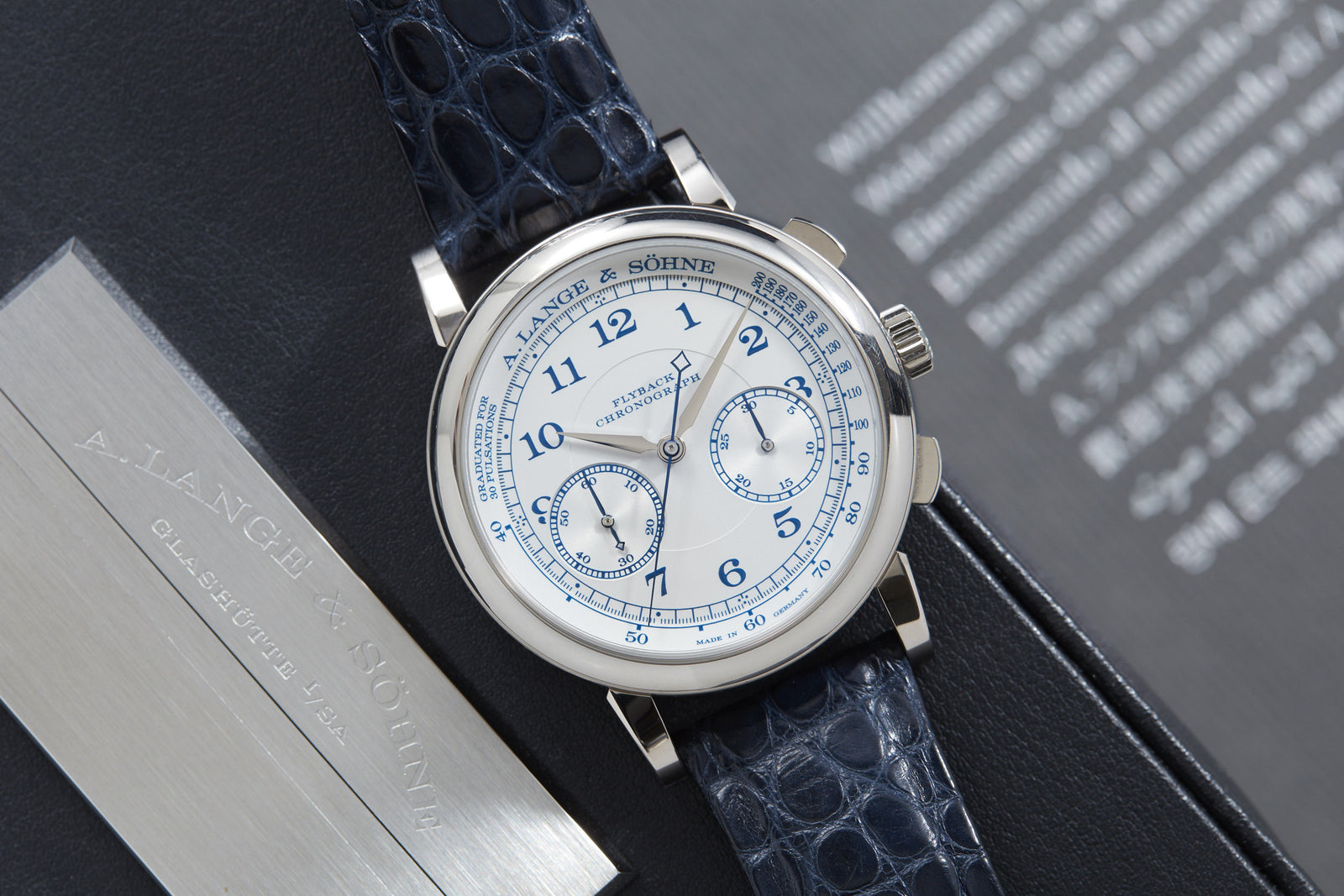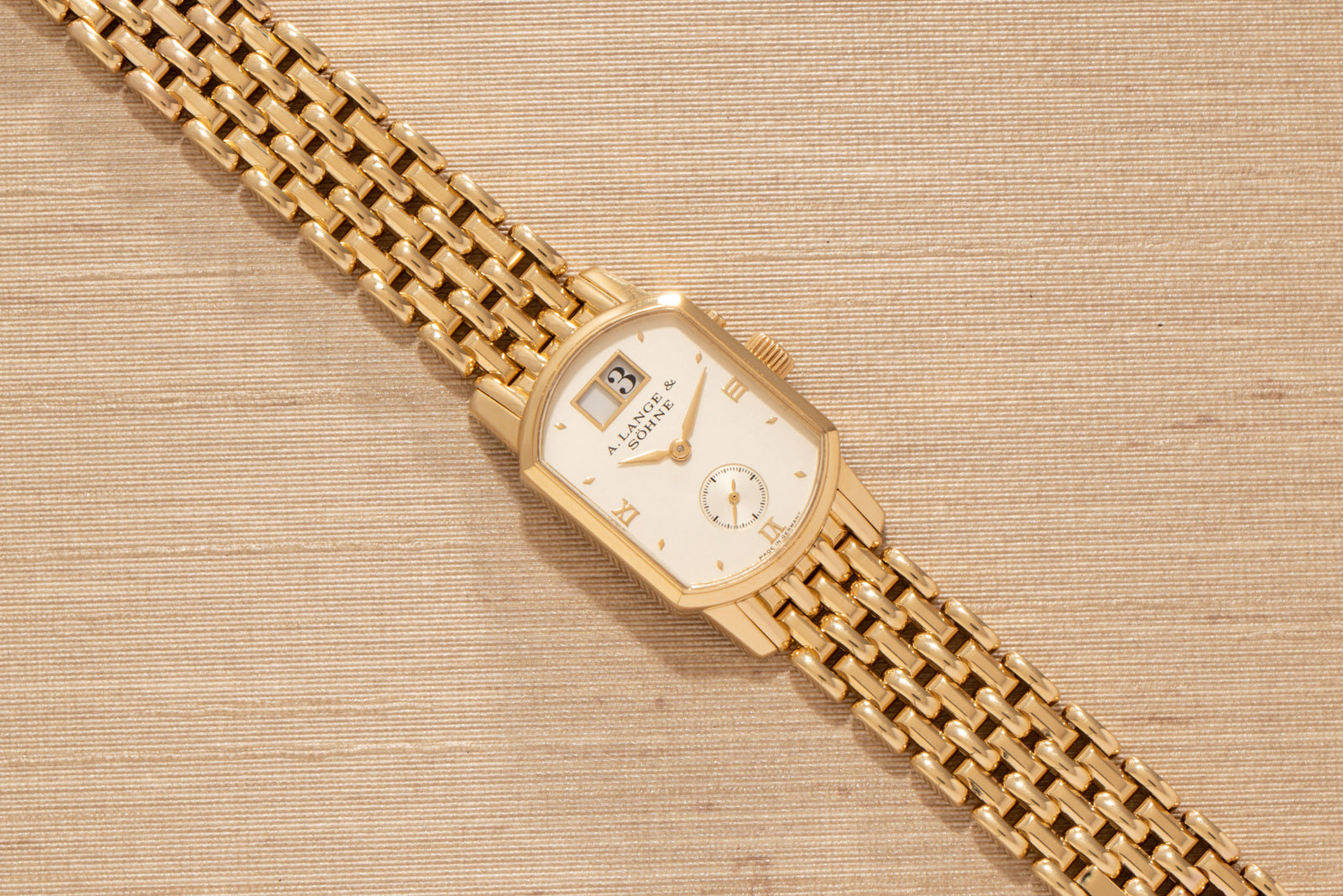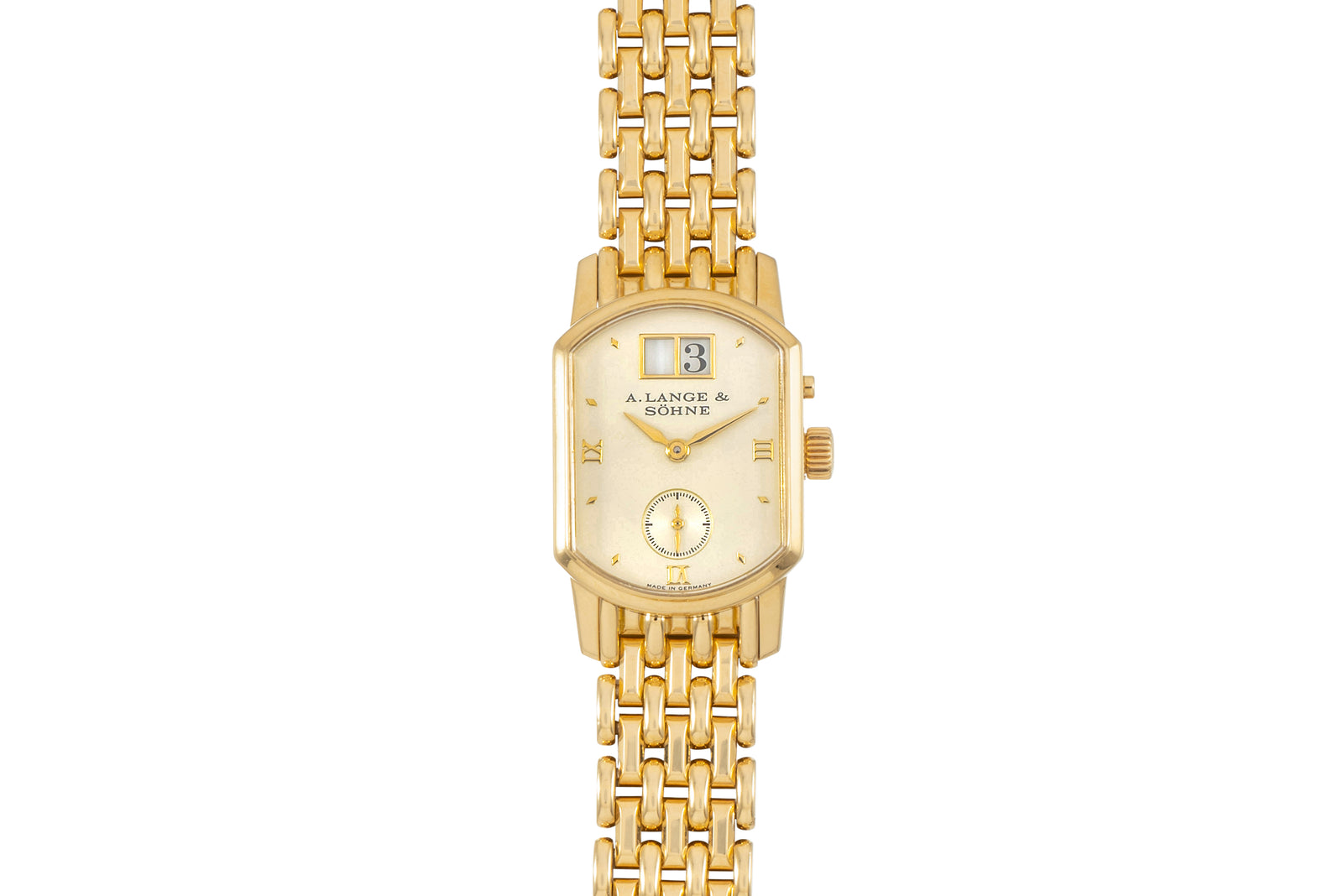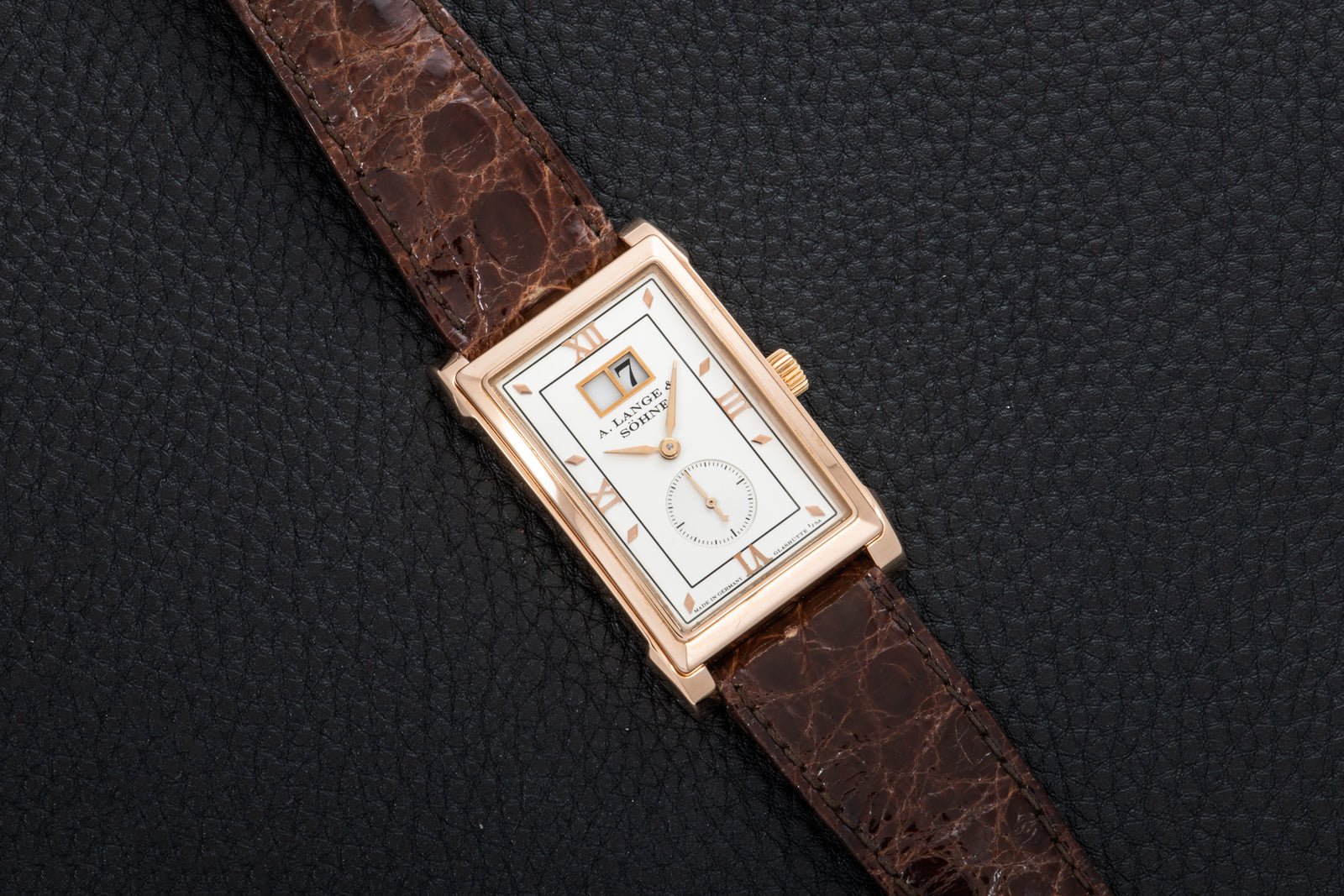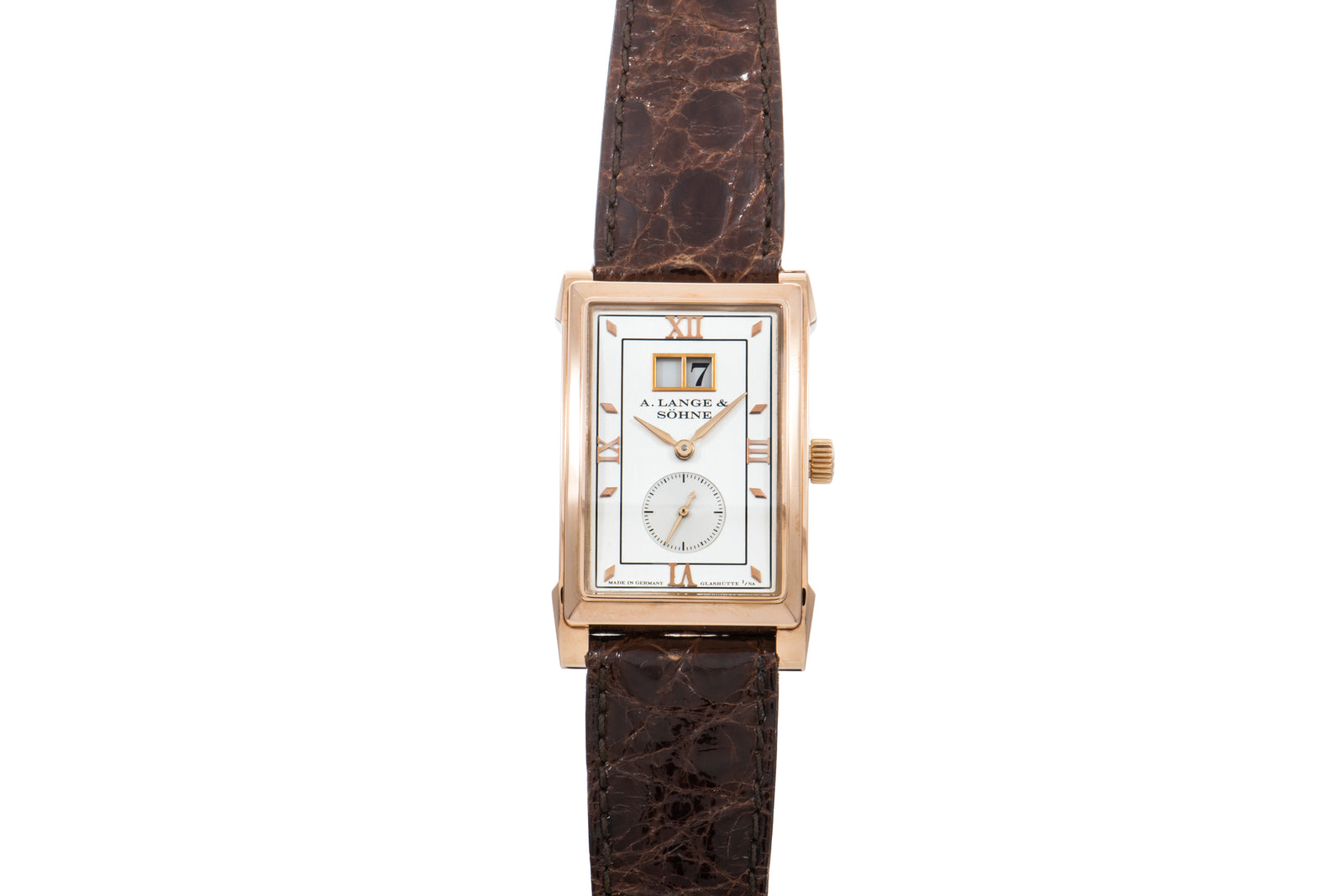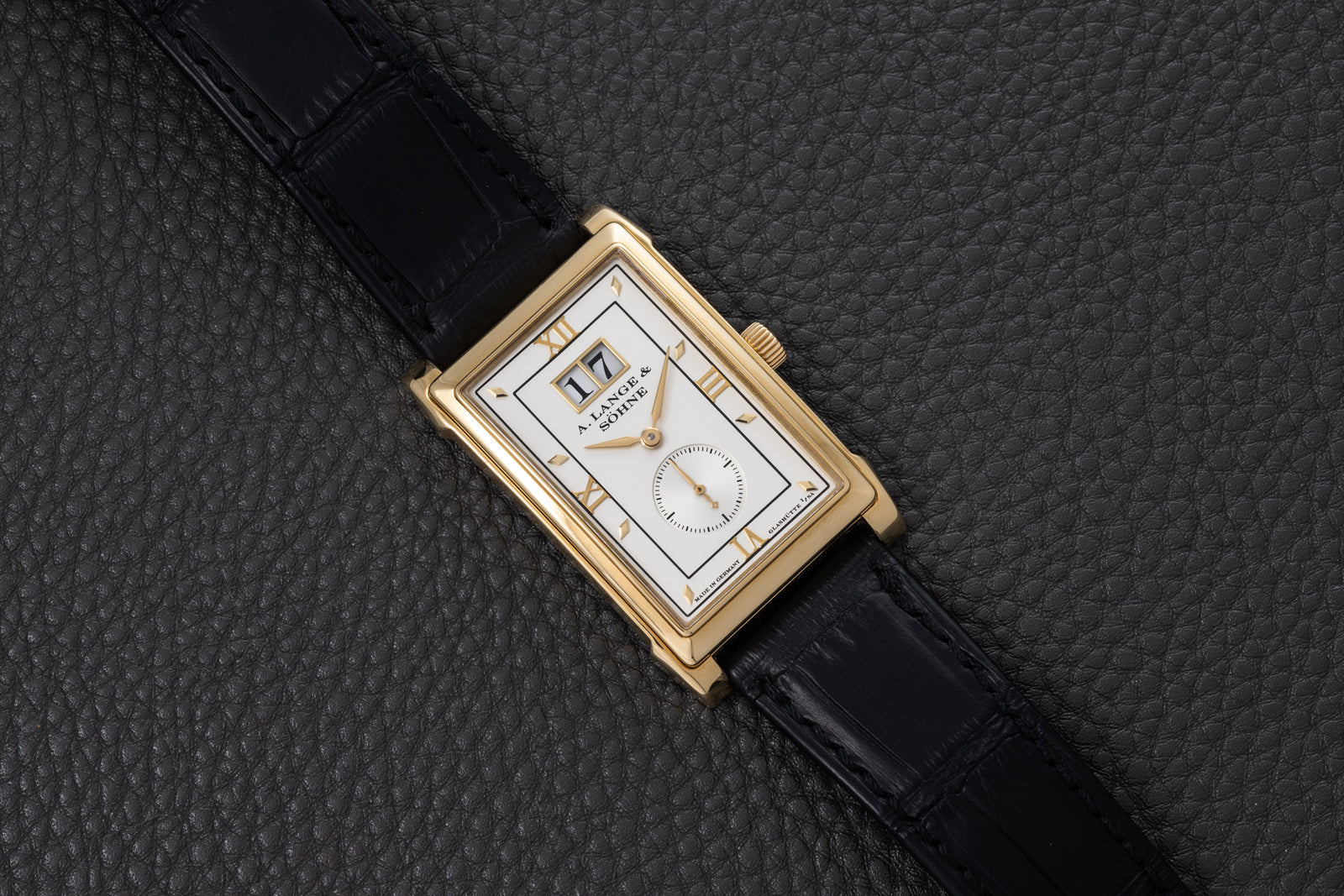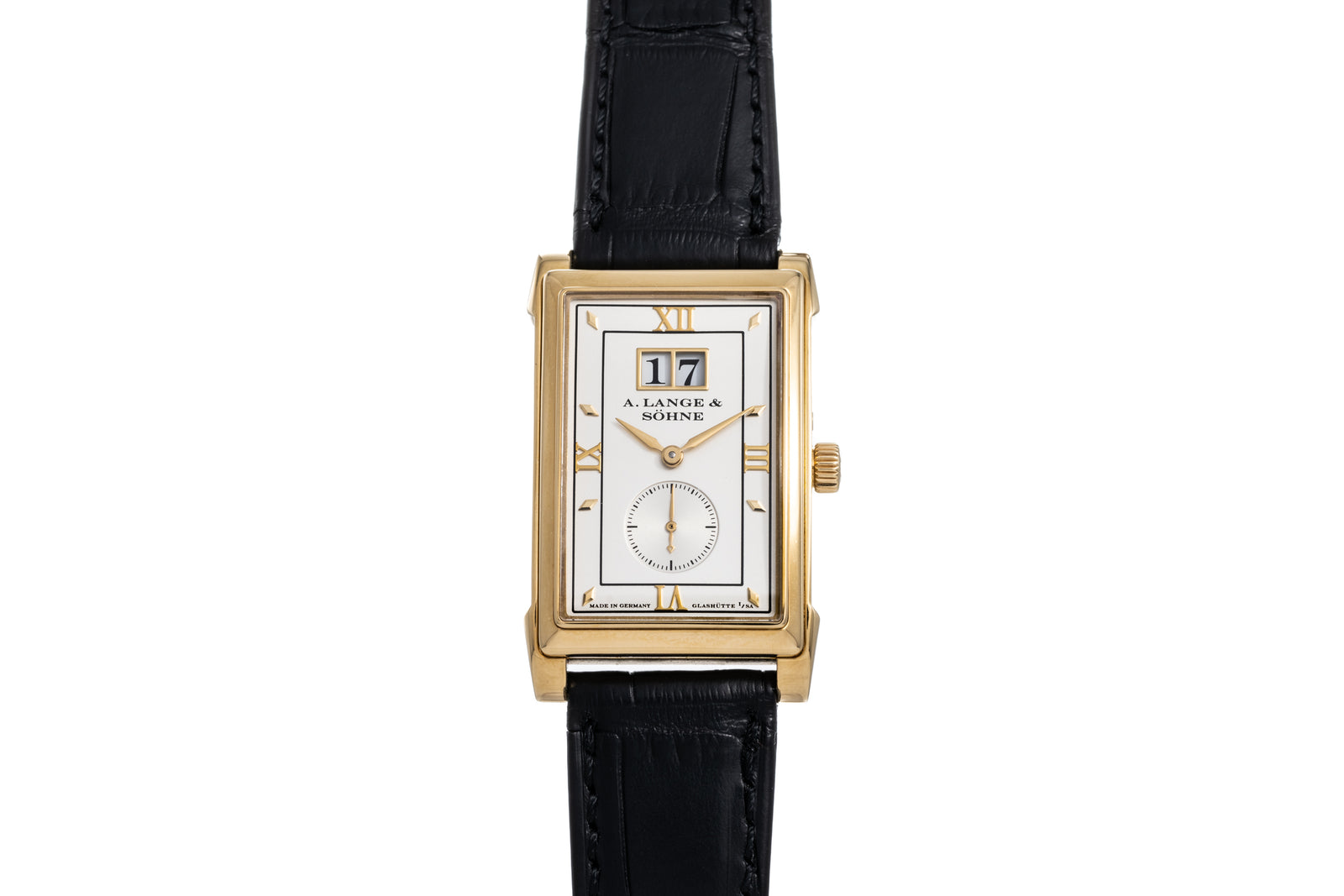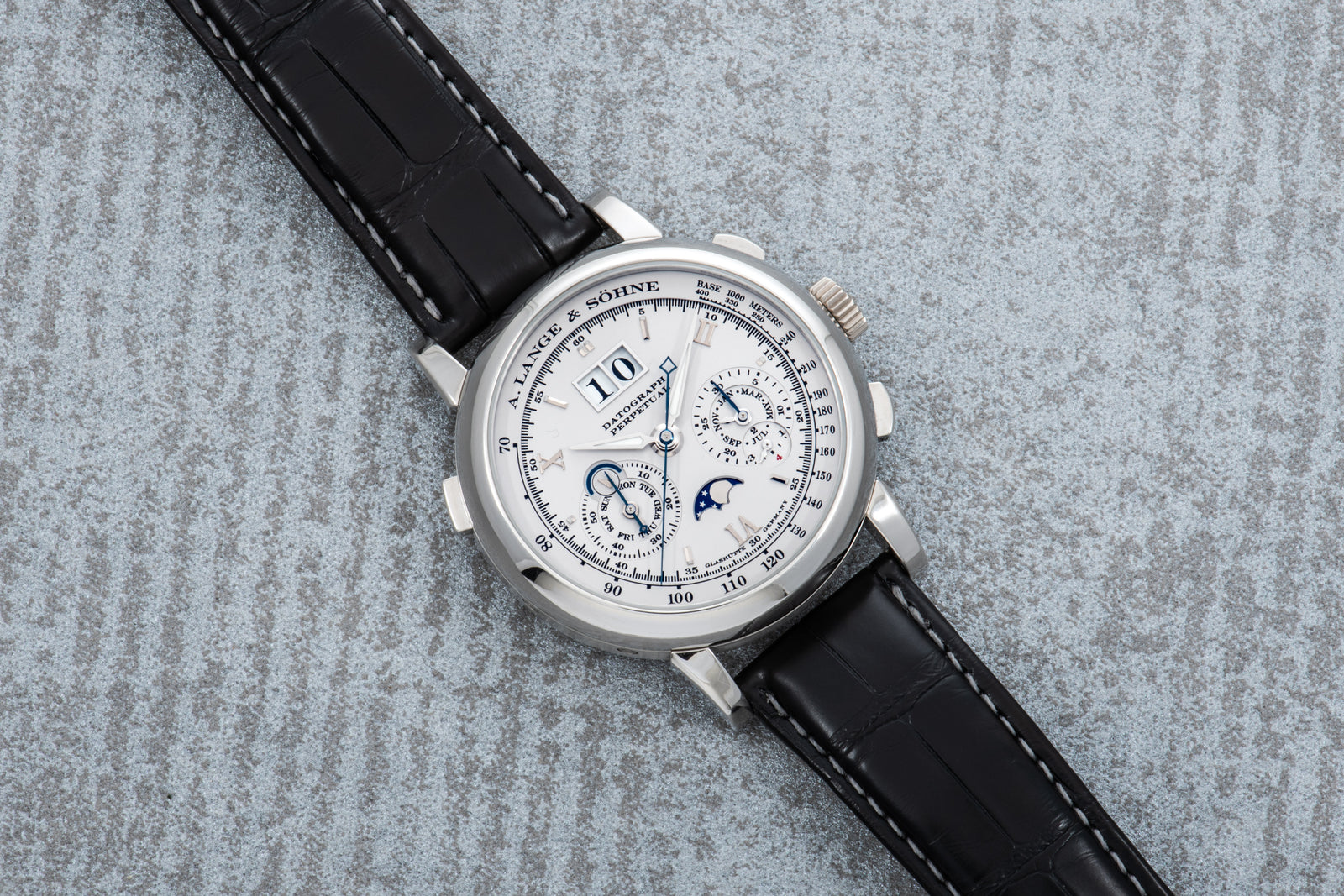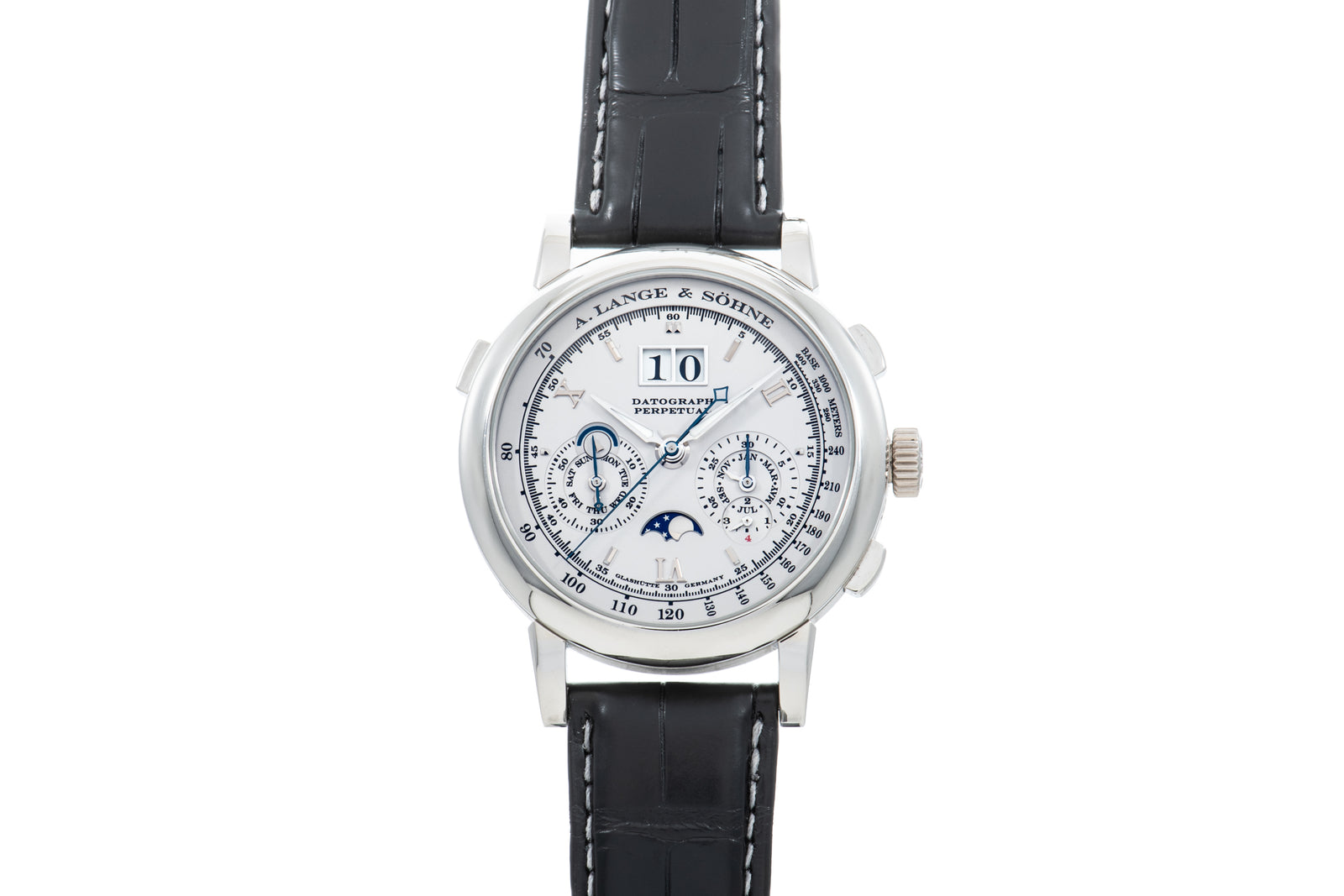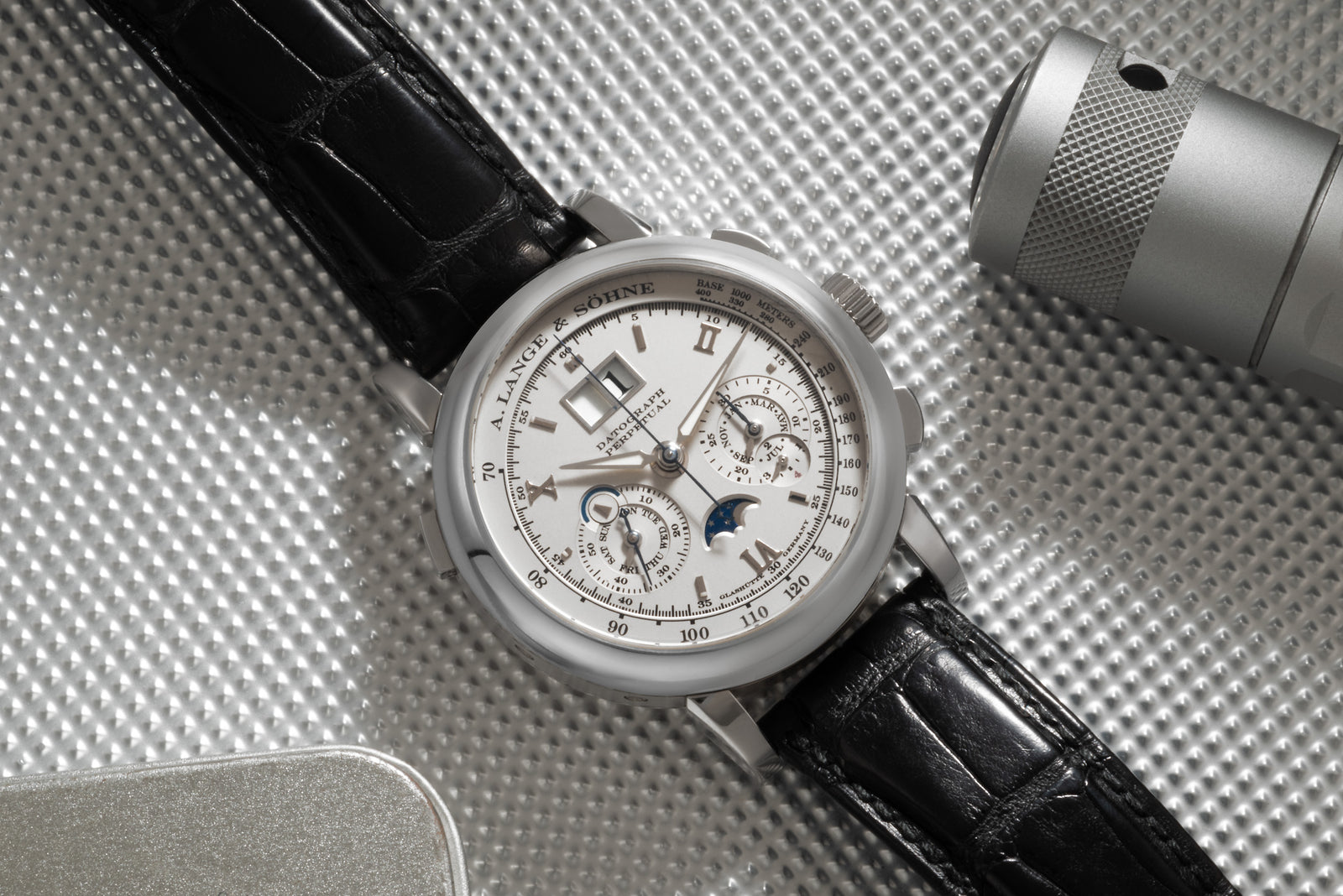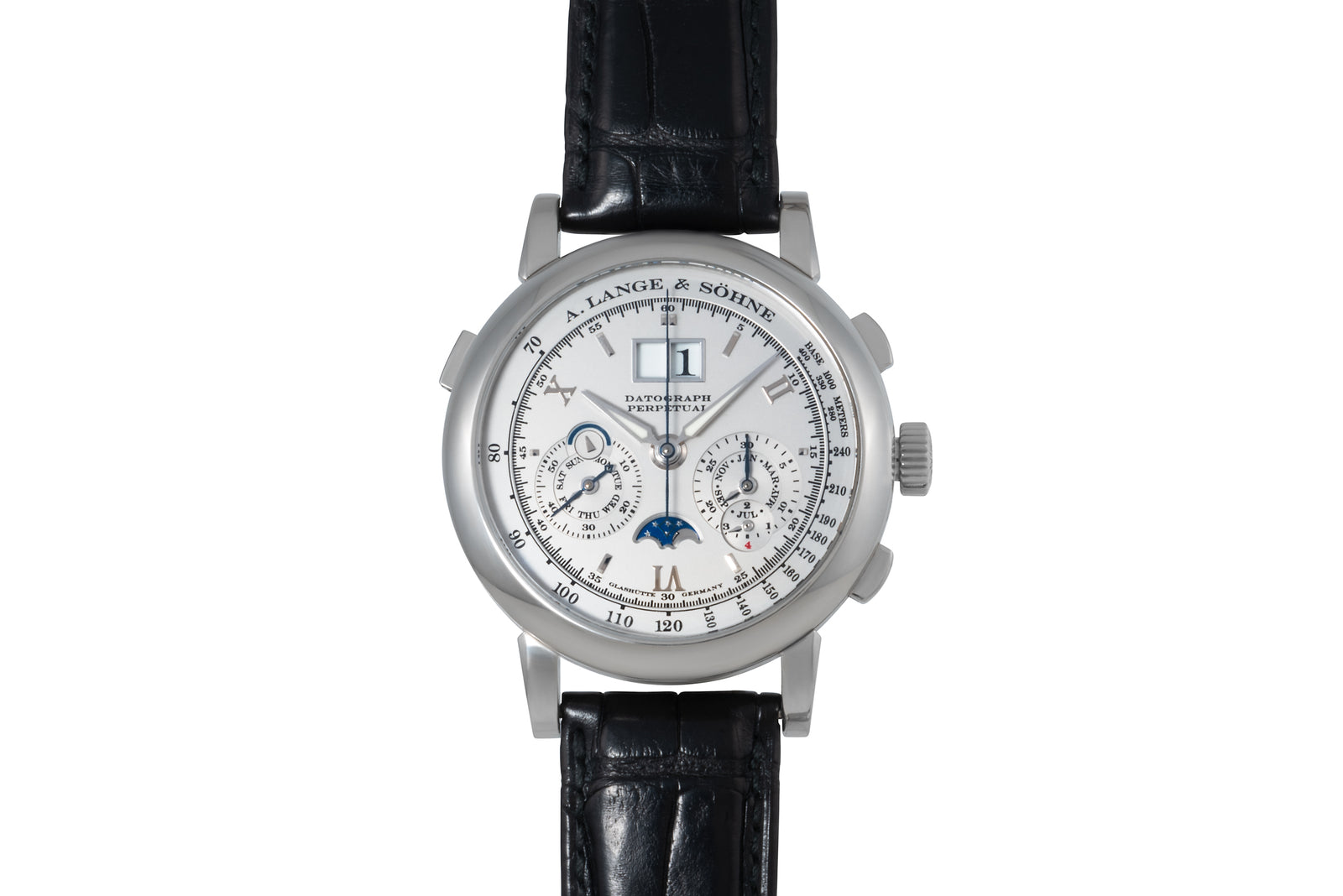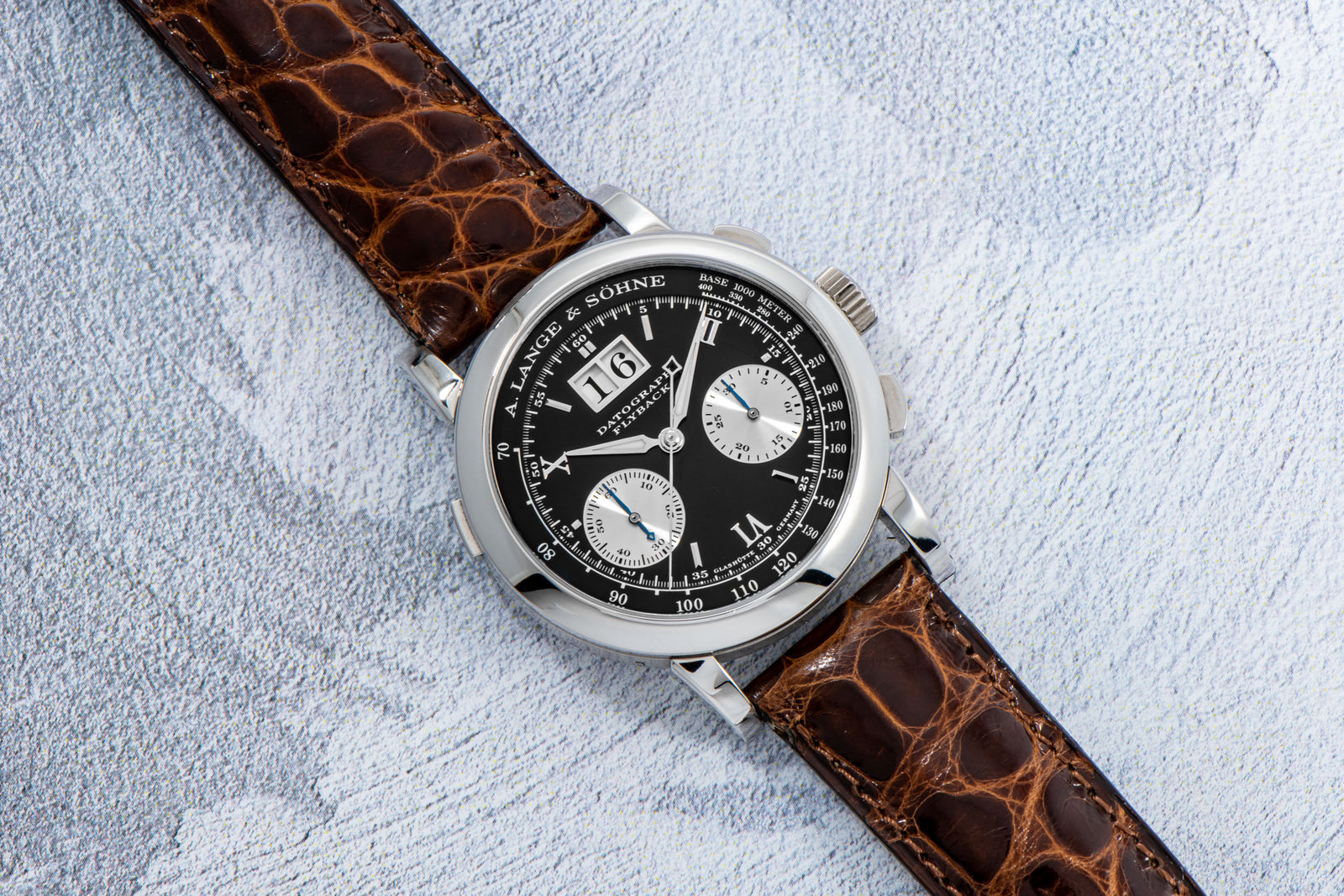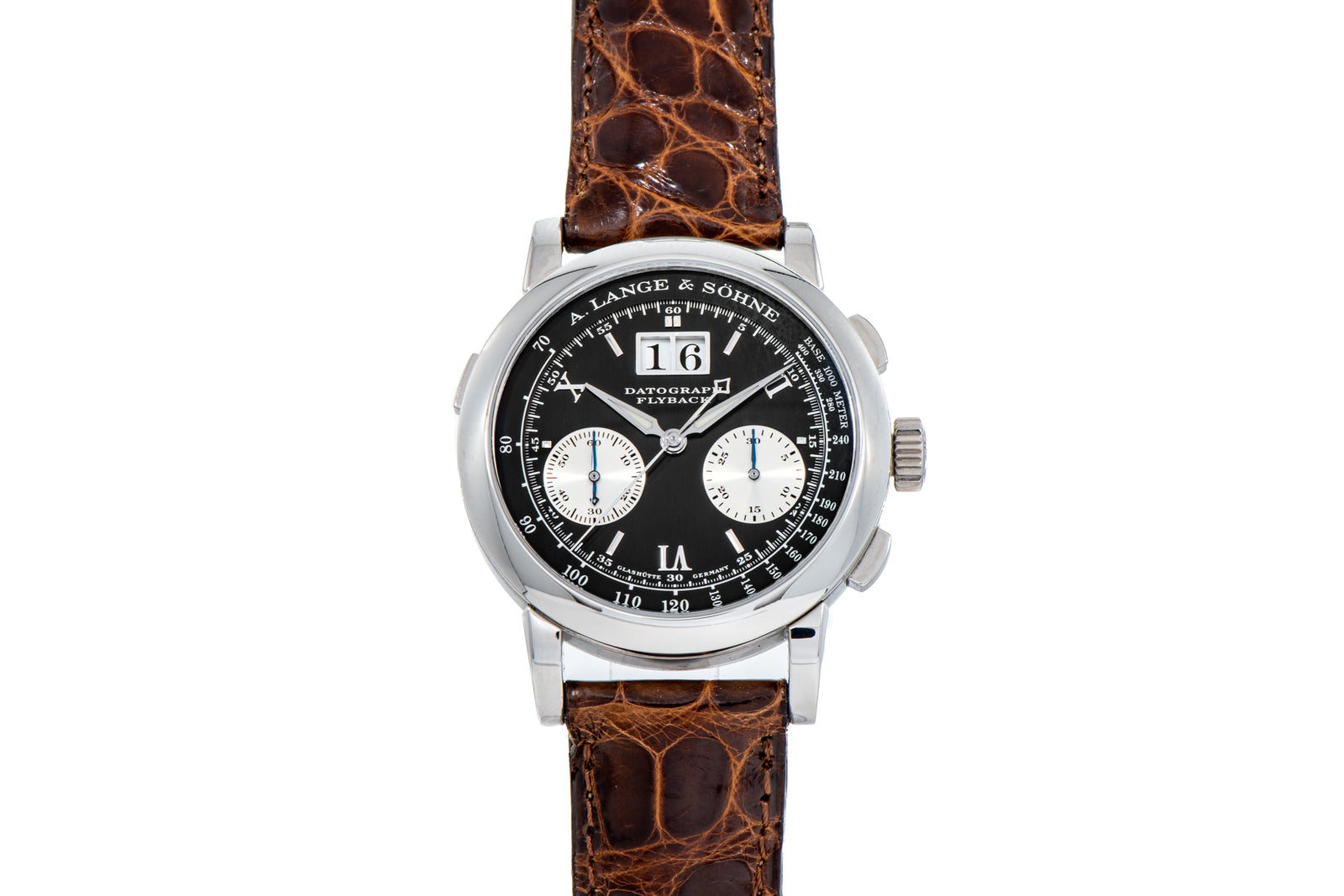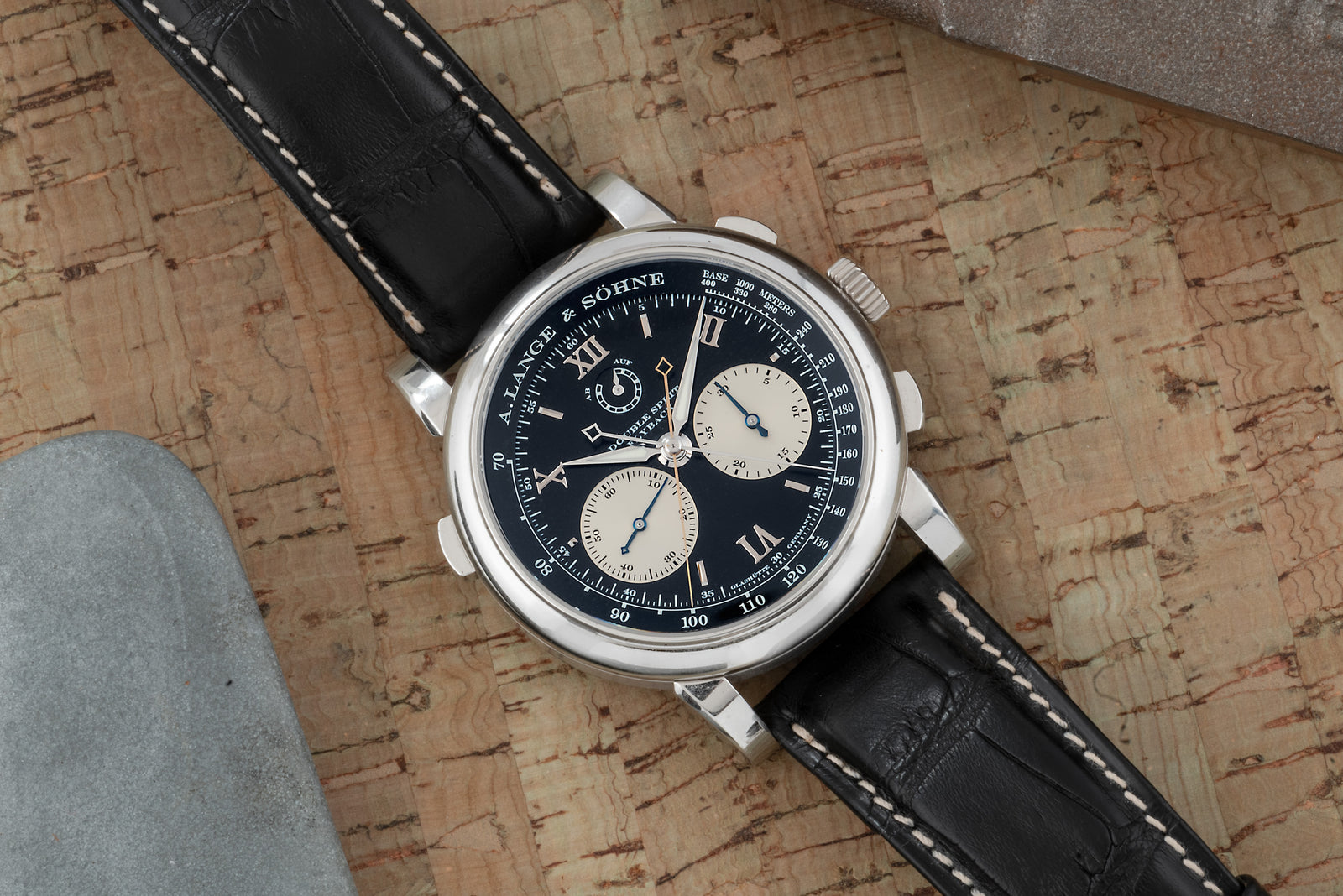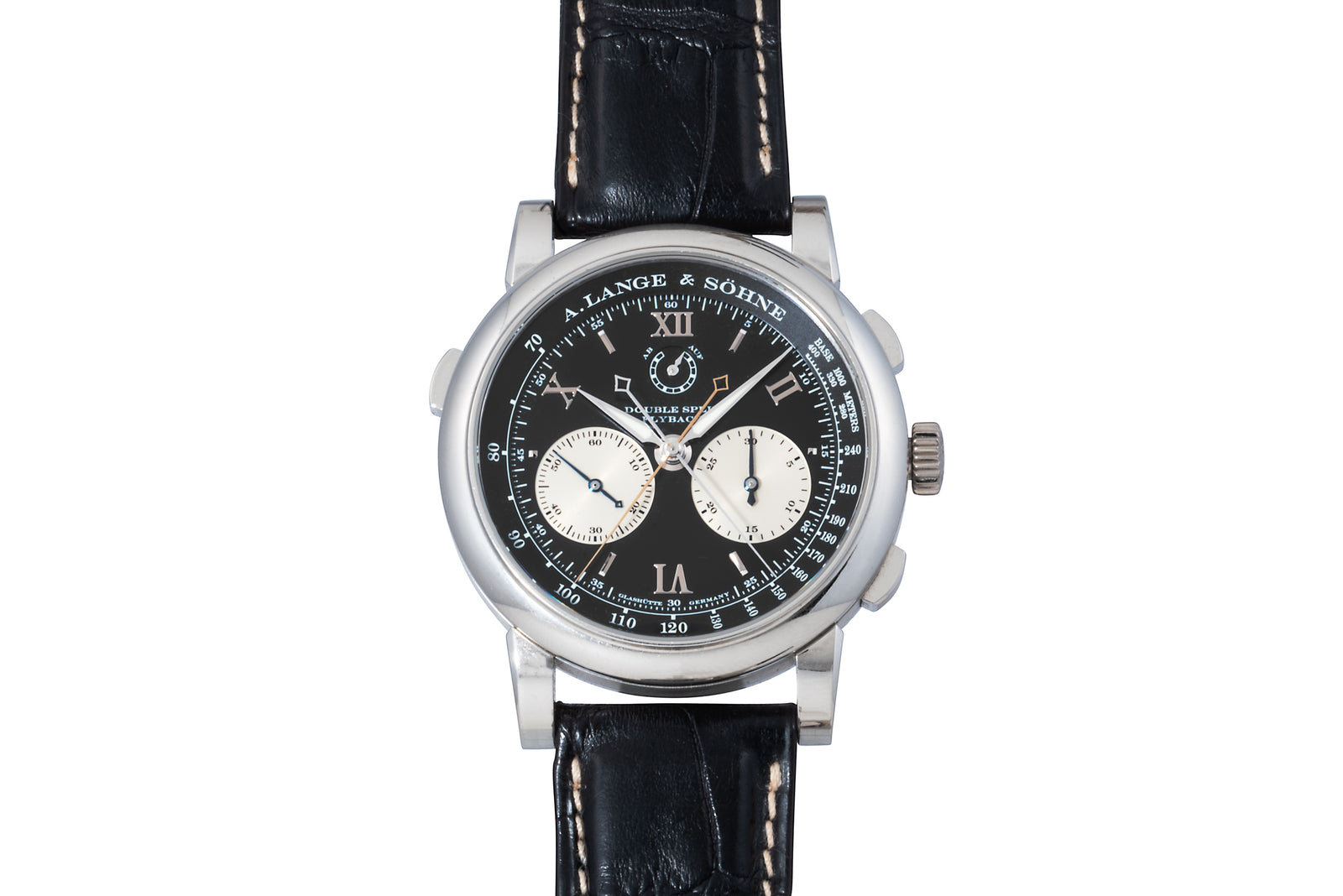Rolex Explorer Gilt
- Soldspan>
- Sold
Why We Love it
–
Why We Love it
–After Sir Edmund Hillary and Tenzing Norgay’s ascent of Everest in 1953, the tallest peaks in the world—once thought unconquerable—fell to the might of the daring alpinists who ascended them. But one mountain is left: Cerro Torre, a 10,262 foot spire of granite that juts like a spear from the Southern Patagonia Ice Cap. So steep and so tall it is, and so punishing the winds at its summit (over one hundred knots), that mountaineers long feared to climb it.
All except two men: Cesare Maestri, an Italian climber called “the Spider of the Dolomites,” and his climbing partner, an Austrian named Toni Egger. On January 31, 1959, the two mountaineers conquered the unconquerable in a brisk four days. During the three-day descent, as the brutal winds whipped up a punishing storm, Cesare Maestri watched as his climbing companion and friend Toni Egger was swept away by an avalanche; his body wouldn't be found until nearly 25 years later, in 1974.
But according to some, this heroic ascent might never have happened—at least, not exactly as Maestri had claimed.
There’s no denying that Maestri and Egger ever made it to Cerro Torre. Maestri’s later account, Arrampicare e il Mio Mestiere (Climbing Is My Job), was corroborated by the existence of fixed ropes and gear that littered the first thousand feet of their descent. Above that, however, was nothing.
Maestri insisted that Egger’s camera, which contained the only photographic evidence of their summit, was lost with Egger in the avalanche. But a photograph taken by Maestri himself in the early stage of their ascent showed Egger scaling “the lower slabs of Cerro Torre’s wall.” Furthermore, the journals of other members of the team related the trips that Egger and Maestri made to fix ropes for their climb.
However, in 2015, a climber named Rolando Garibotti—himself a native of Patagonia who’d cut his teeth on the peaks of the Chaltén Massif where Cerro Torre is located—finally cracked the case.
After countless hours in which he studied maps and racked his brain for memories of previous climbs, Garibotti was able to pinpoint the location where that photo of Egger had been taken. It was on a tower called Perfil de Indio on the west side of the Chaltén Massif, almost exactly opposite where Maestri claimed his ascent had taken place. But in the five decades that followed the deadly climb, Maestri never once mentioned that he and Egger had been climbing on the western side of the mountain.
Garibotti posited that Maestri and Egger might indeed have attempted the summit from the eastern side, making it a thousand feet only to be blown back by the buffeting winds. The western face had proven more hospitable in 1958, when two climbers—Walter Bonatti and Carlo Mauri—had attempted the summit. Perhaps Maestri and Egger, having tried to approach the summit from the east, had rappelled west across the wind-whipped, avalanche-prone Col Standhardt (a saddle between two towers, the Aguja Standhardt and the Aguja Bifida) only to meet their doom?
Whatever the circumstances, and whatever led Maestri and Egger to the western face of Cerro Torre, the truth behind the mystery of that fateful day rests only with Maestri, who will take it to his grave…
Rolex has long been the watch of exploration. Their timepieces have been worn into some of the most extreme locations on the planet, from the highest summits to the deepest parts of the ocean, often at the behest of Rolex technicians who wanted to subject their timepieces to worst Mother Nature could conjure. So it wasn’t surprising that Rolex approached Hillary and Norgay's 1953 Everest expedition with a run of simple Oyster Precisions, hoping that the mountaineers who had set their eyes on the monolithic mount would utilize them on their journey to one of the few places on the Earth yet to be touched by man.
The Oyster Precision introduced the 3-6-9 black Arabic dial that we all associate with the Explorer today. But with many of the details lost to history, some suspect that Norgay himself had a proto-Explorer on his wrist. Regardless, it was the 3-6-9-dialed Oyster Precision that Rolex rechristened as the Explorer in honor of Hillary and Norgay’s historic accomplishment.
Built on the trim 36mm Stainless Steel case with ‘Twinlock’ crown, it featured a Calibre 6298 automatic movement and a simple Arabic dial with luminescent numerals at 3,6, and 9, a layout which is now synonymous with the history of the model. In name and design, the watch was a tribute to Hillary and Norgay and to the simple Oysters that they wore during the expedition.
Between 1953 and 1960, Rolex tried a handful of movements and case designs, but kept the overall appearance of the watch relatively unchanged. The successor of the earliest Explorers (which were produced in very small numbers) was the Reference 6610. It featured, among other small changes, a gilt dial with the same 3-6-9 layout and a sweeping seconds hand with a slightly oversized luminescent plot - known to collectors as a "lollipop hand".
This particular 6610 has clearly led a life of adventure, showing just the right amount of scarring from the battles of daily use for over 60 years. Sometime in the past, a previous owner opted to have the luminescent material on the gilt dial and hands stripped and replaced with non-luminous paint. While this certainly affects its value (and is thusly priced accordingly), the quality of the workmanship is truly excellent, and the color and texture of the replaced non-radioactive paint is spot on. Explorers of this age are seldom seen, making this lovely piece a worthy example of this highly-collectible Reference.
A:S Guarantee
+
A:S Guarantee
+Our Pledge
Analog:Shift stands behind the authenticity of our products in perpetuity.
Condition
Since our pieces are vintage or pre-owned, please expect wear & patina from usage and age. Please read each item description and examine all product images.
Warranty
We back each Analog:Shift vintage timepiece with a two-year mechanical warranty from the date of purchase.
International Buyers
Please contact us prior to purchase for additional details on shipping and payment options.
Shipping & Returns
+
Shipping & Returns
+All of our watches include complementary insured shipping within the 50 states.
Most of our products are on hand and will ship directly from our headquarters in New York City. In some cases, watches will be shipped directly from one of our authorized partners.
We generally ship our products via FedEx, fully insured, within 5 business days of purchase. An adult signature is required for receipt of all packages for insurance purposes. Expedited shipping is available at an additional cost. We are also happy to hand deliver your purchase in Manhattan or you may pick it up at our showroom.
Returns must be sent overnight or by priority international delivery, fully insured and paid for by the customer. A restocking fee may apply. Watches must be returned in the same condition as initially shipped.
We welcome international buyers, please contact us prior to purchase for additional details on shipping and payment options.
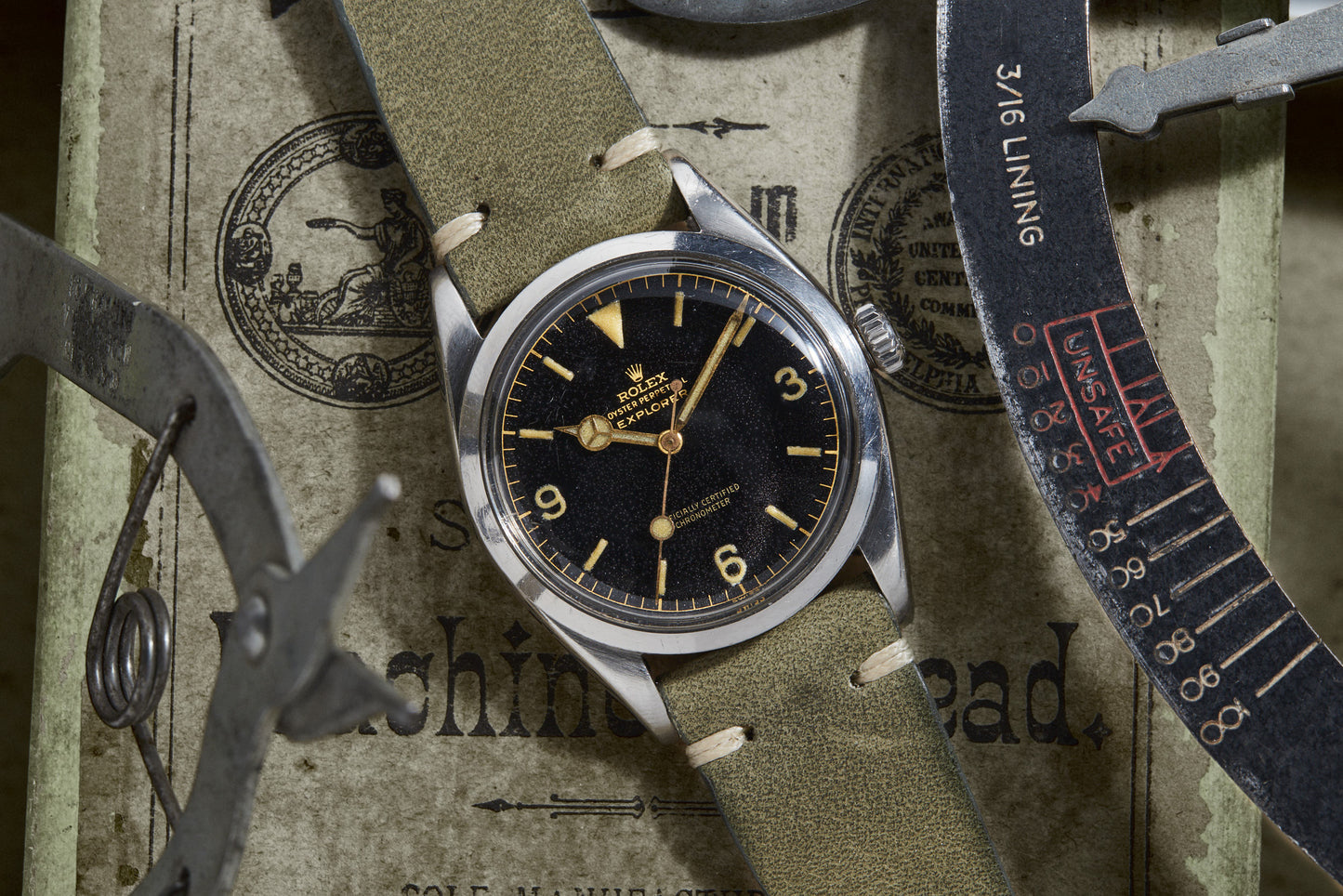
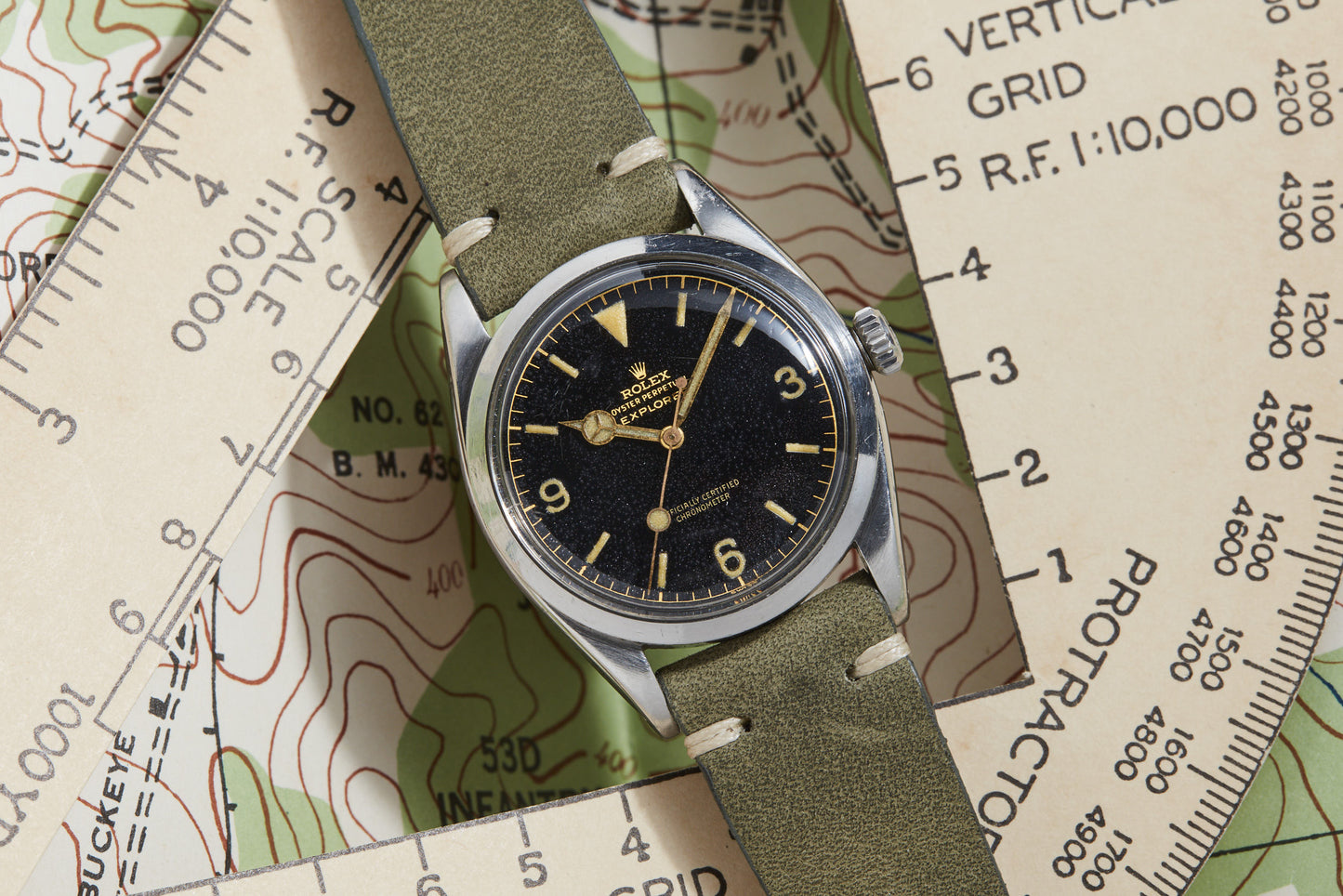
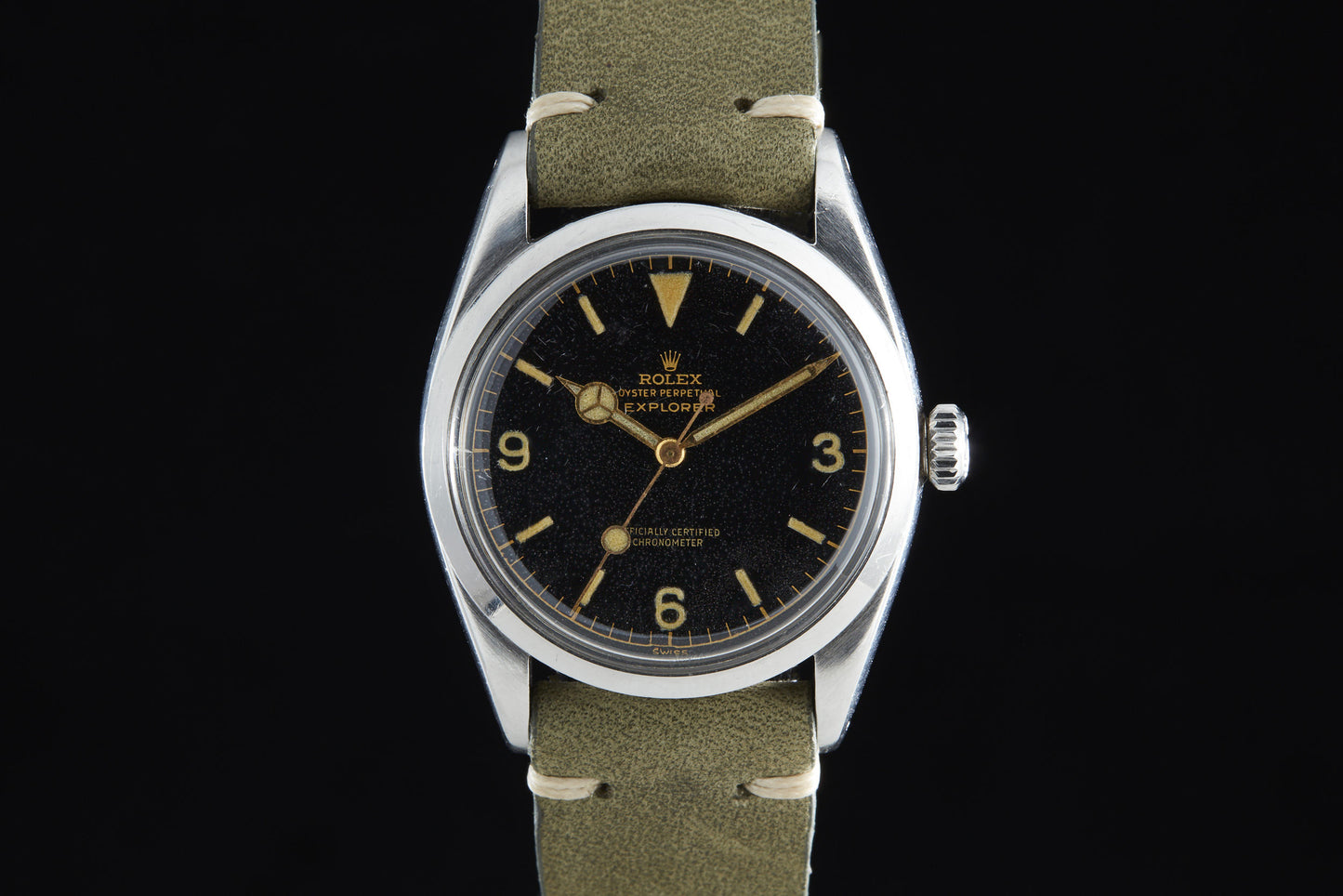
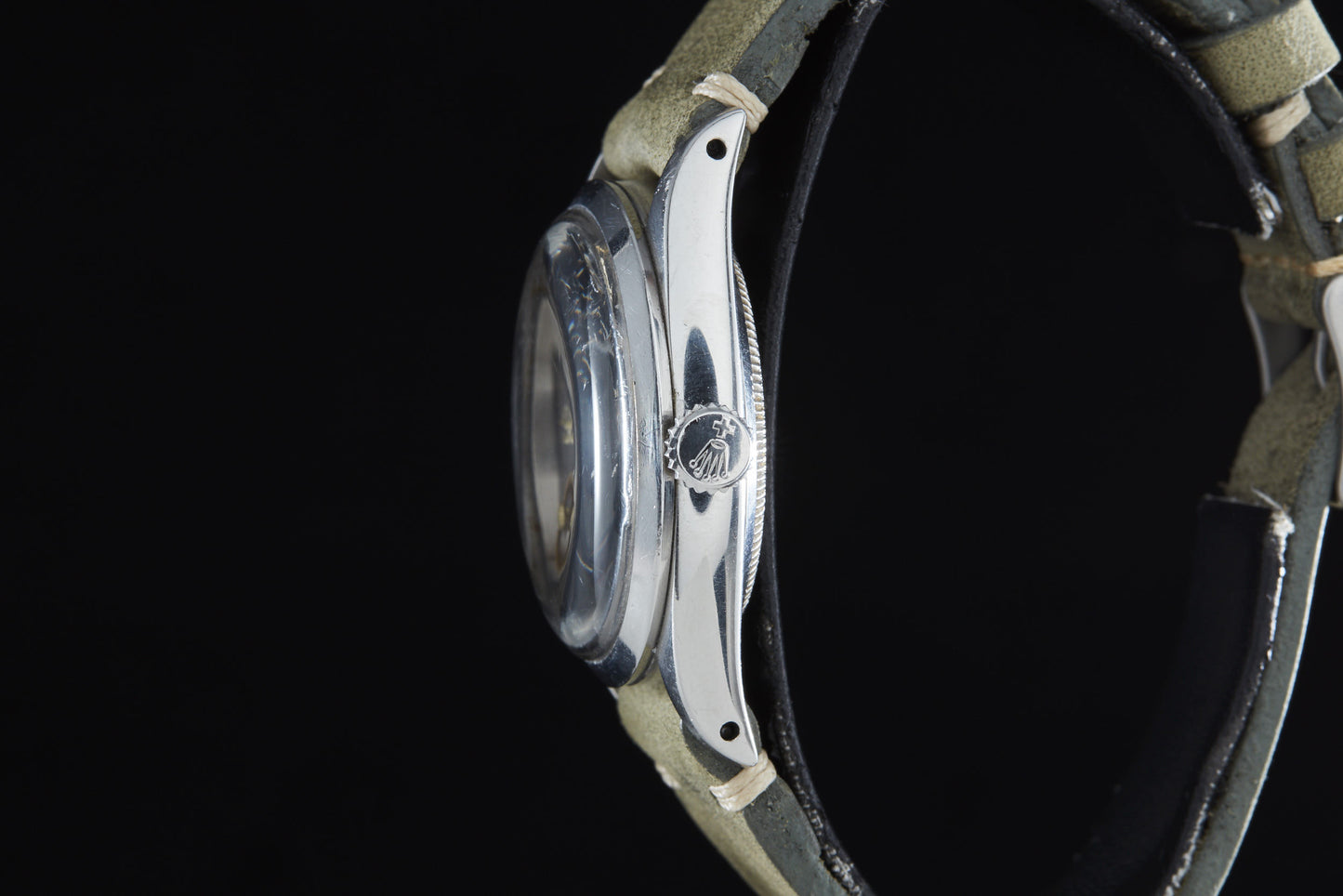
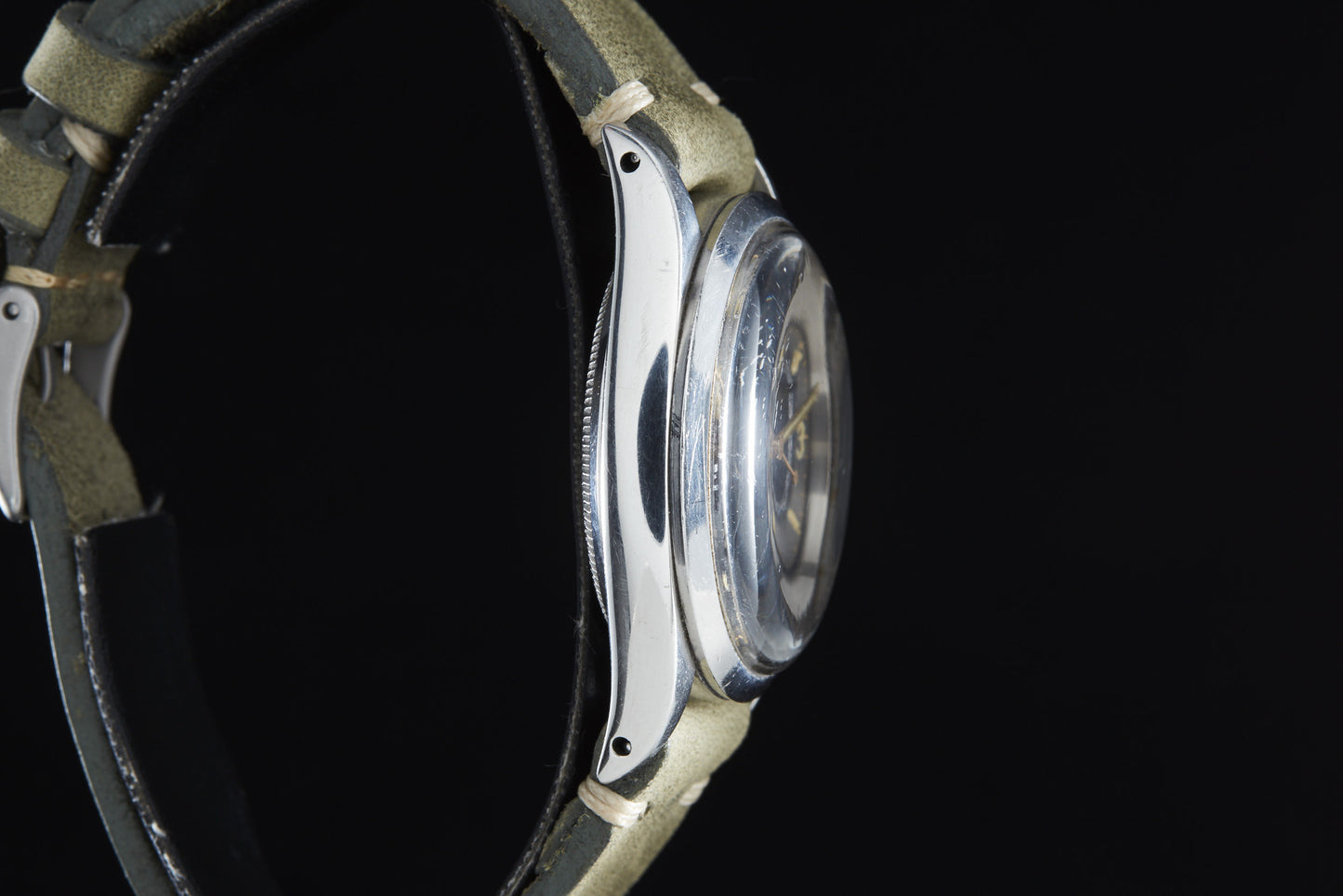
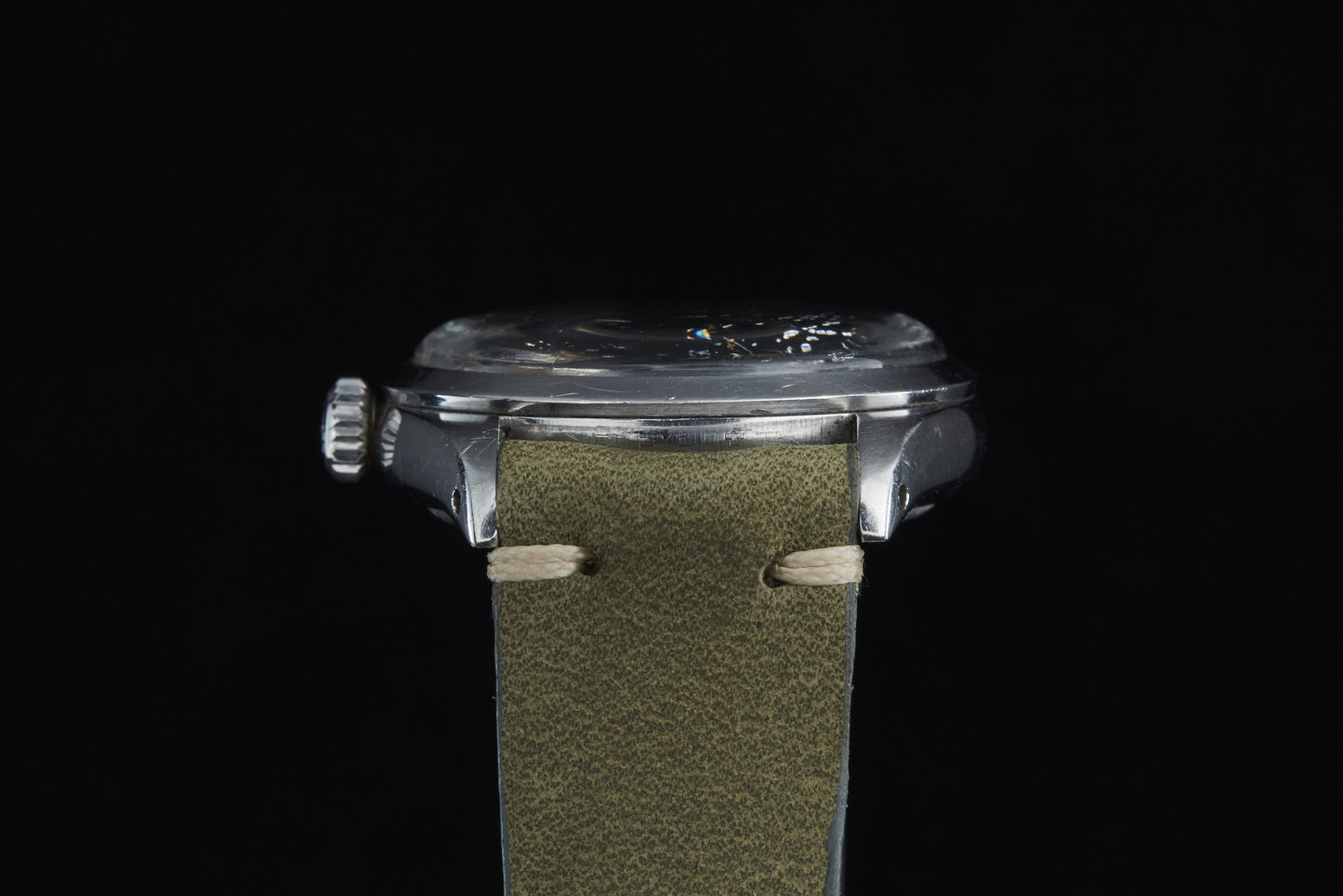
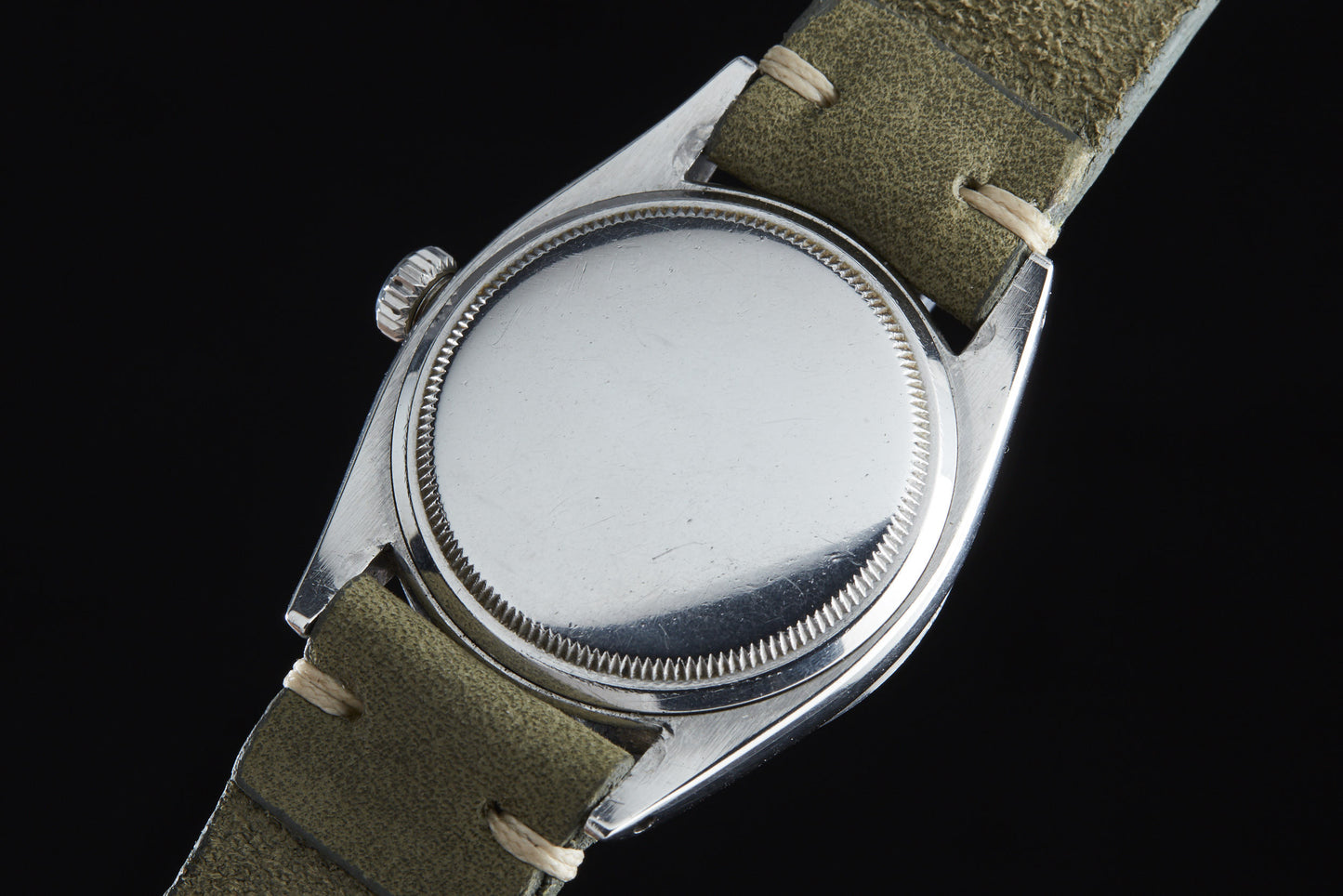

Rolex Explorer Gilt
- Soldspan>
- Sold







